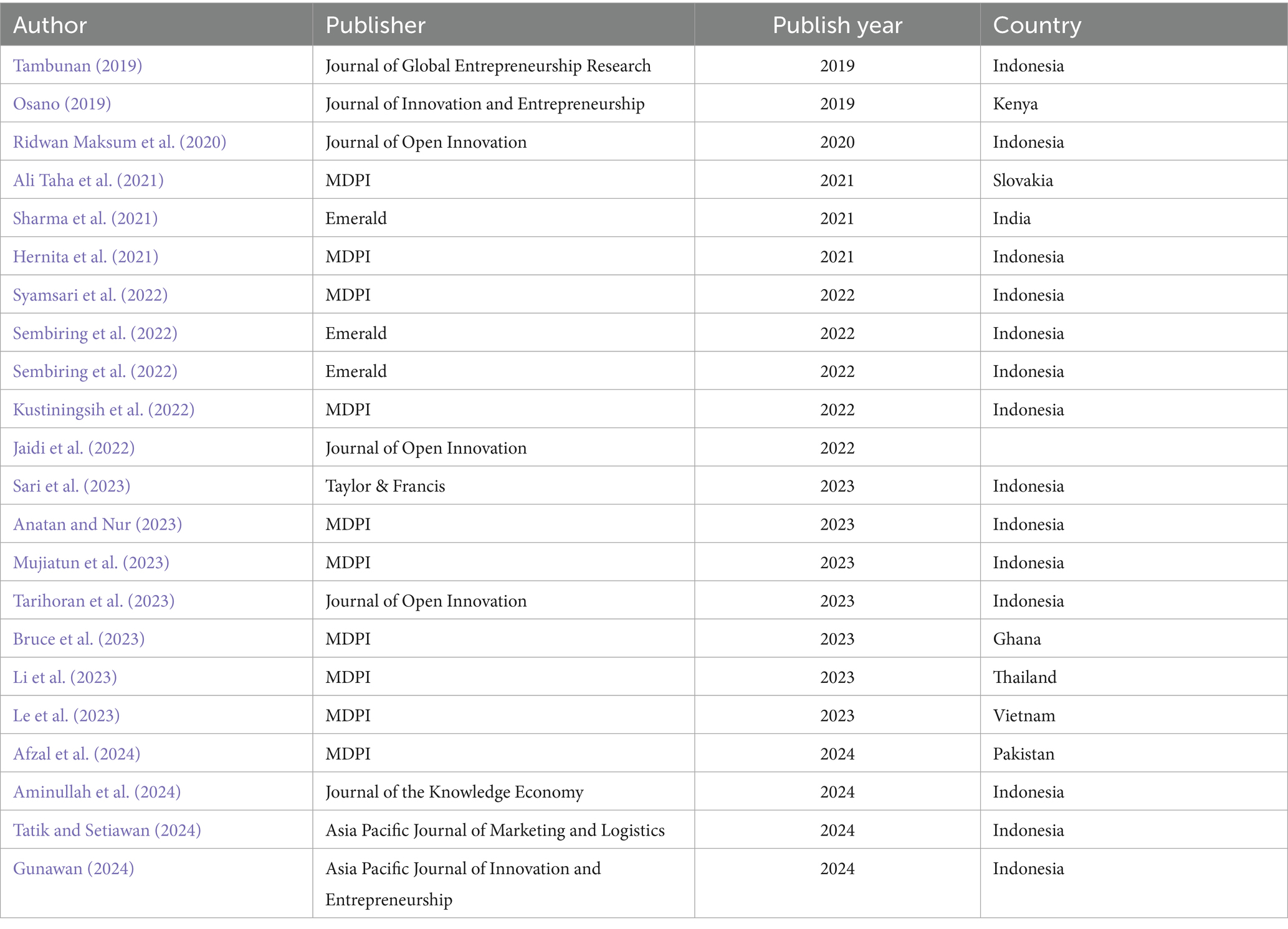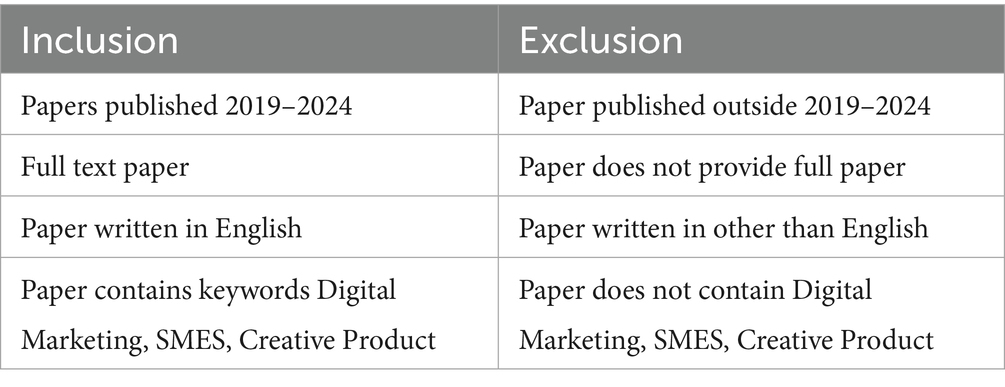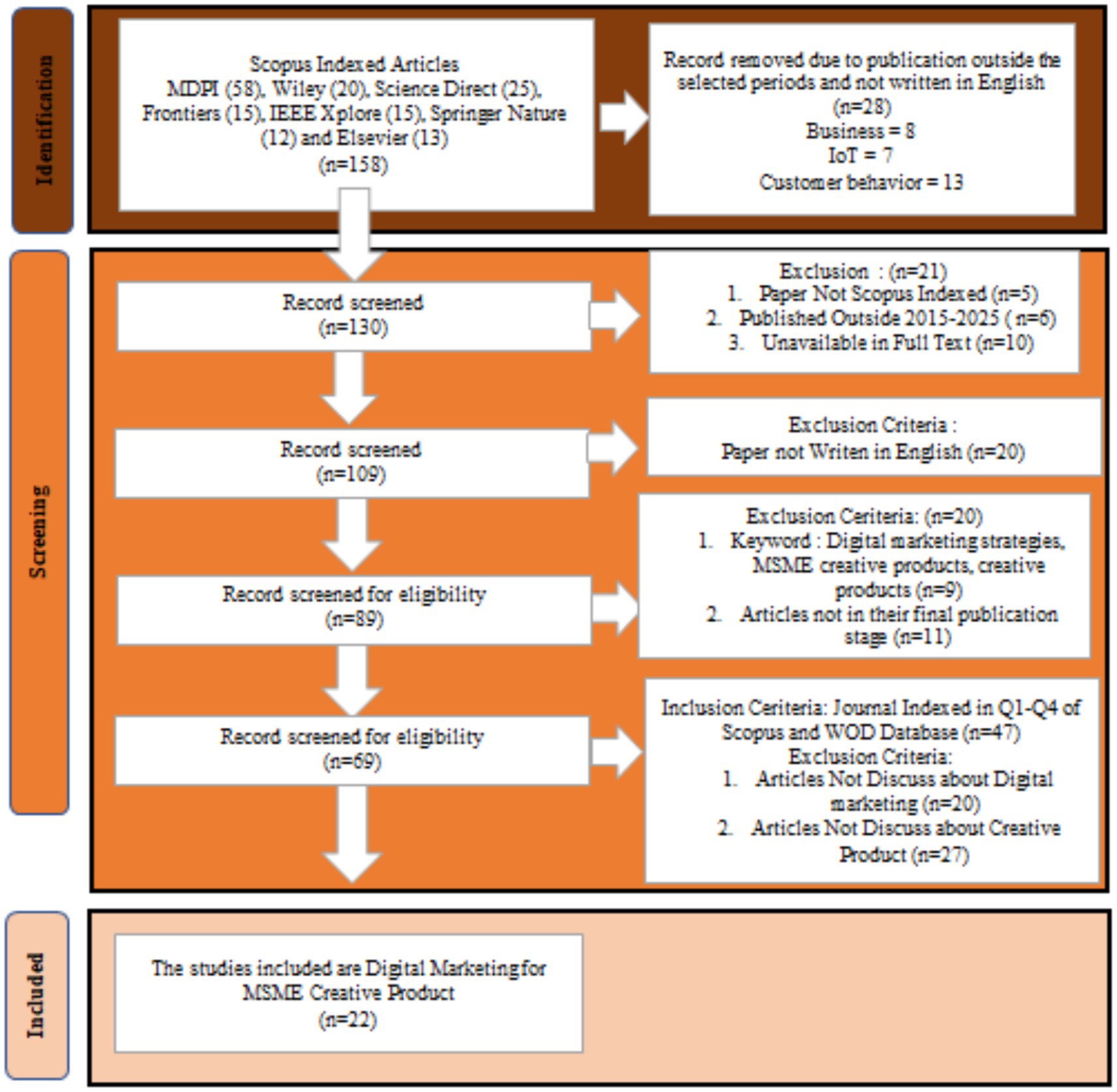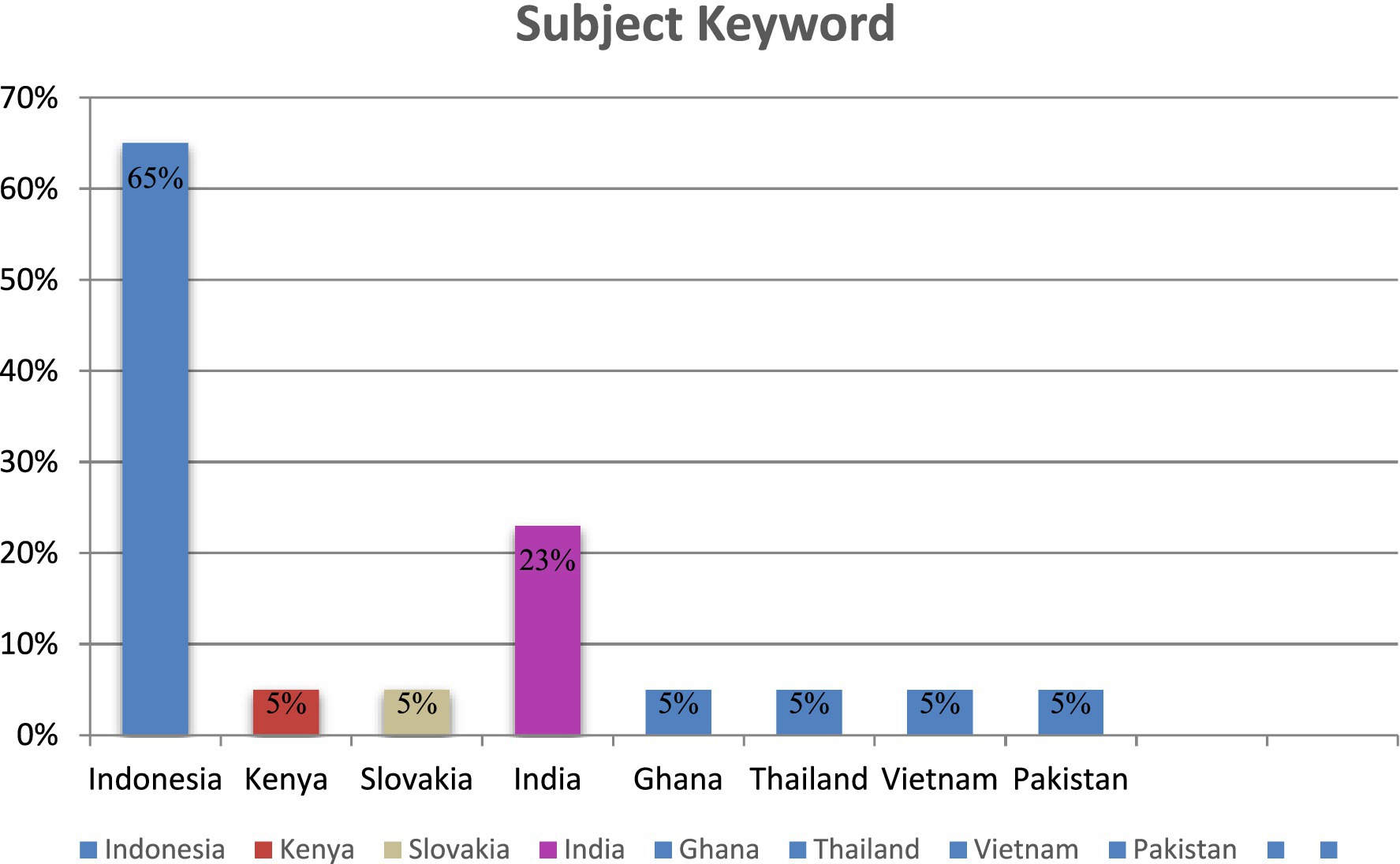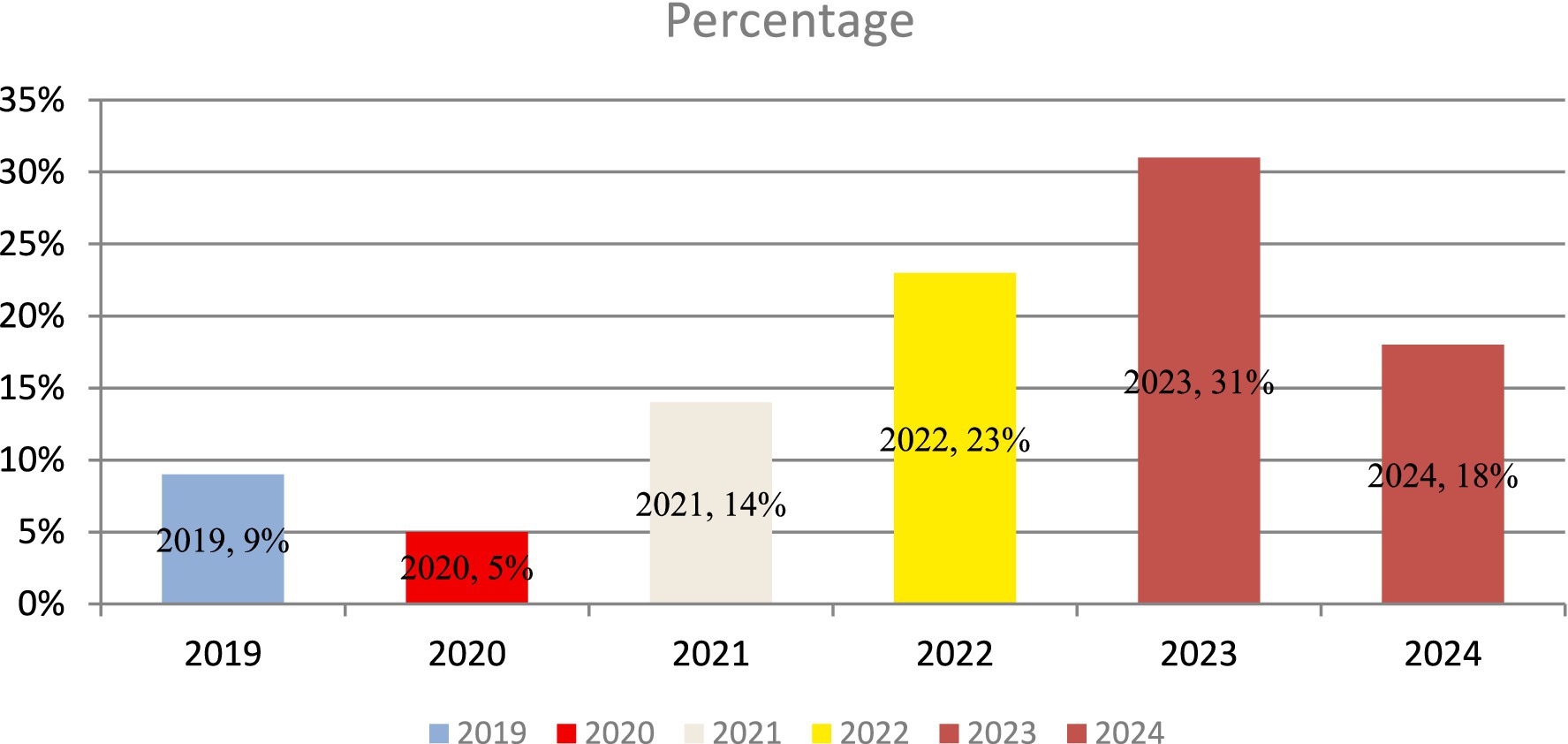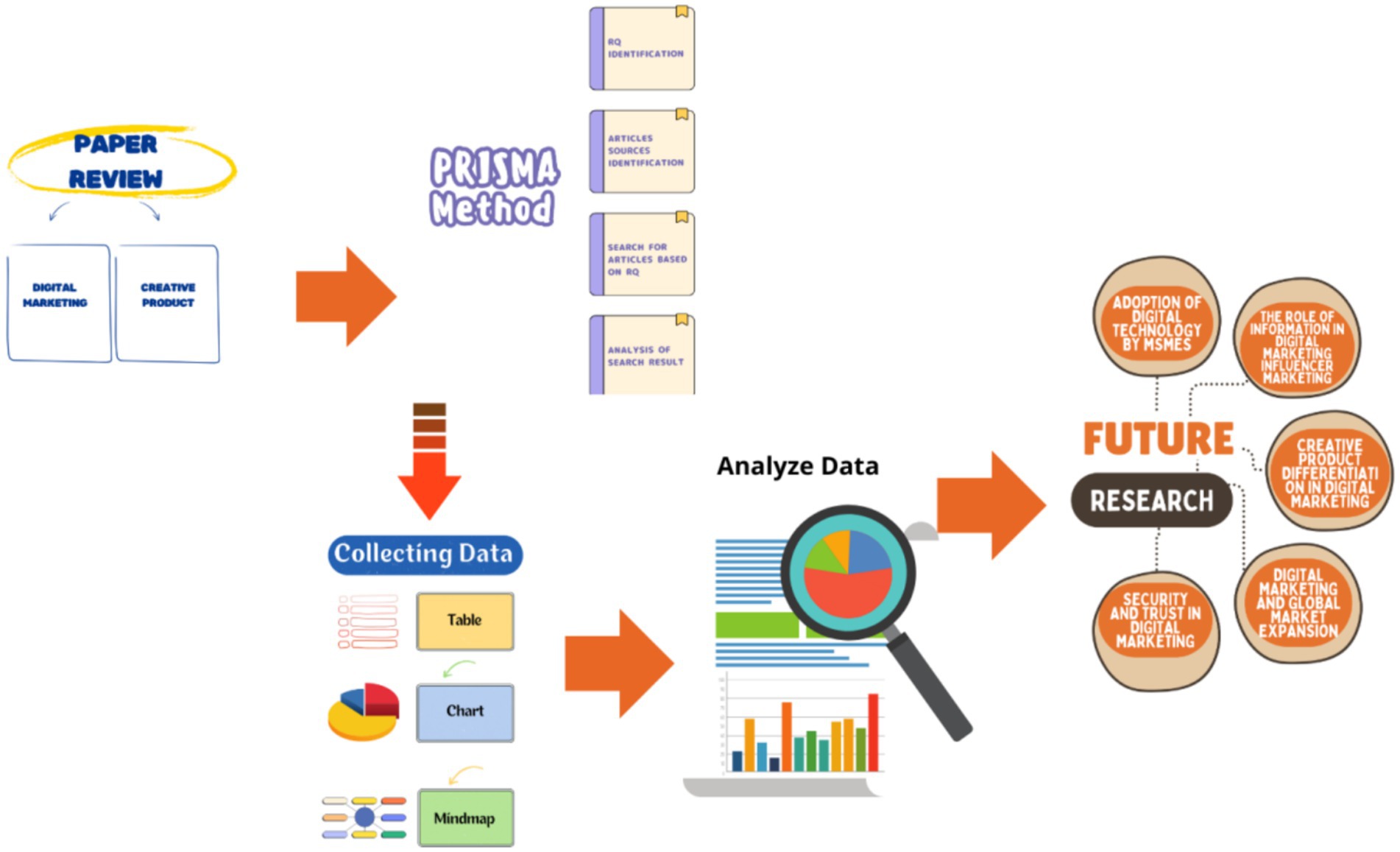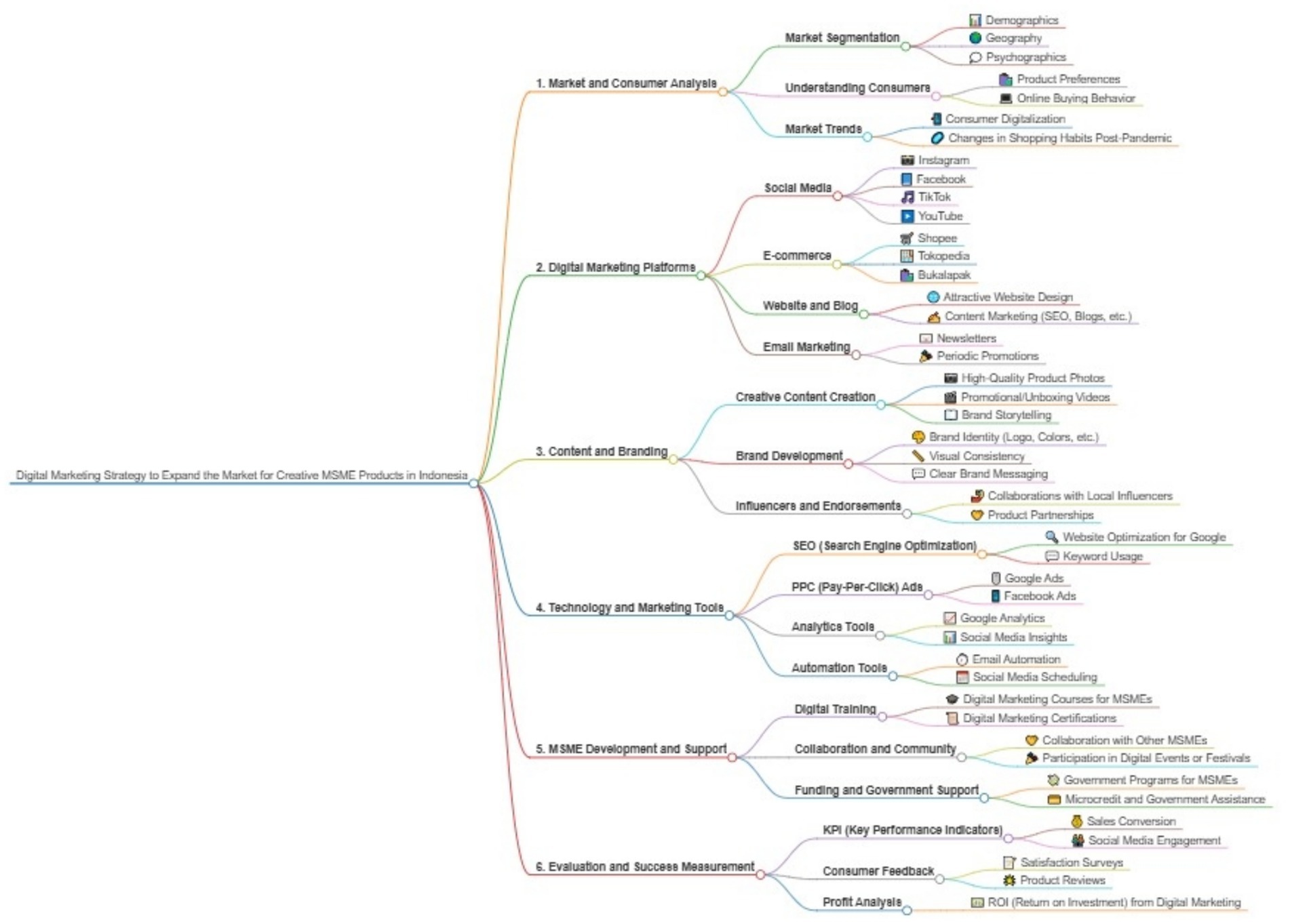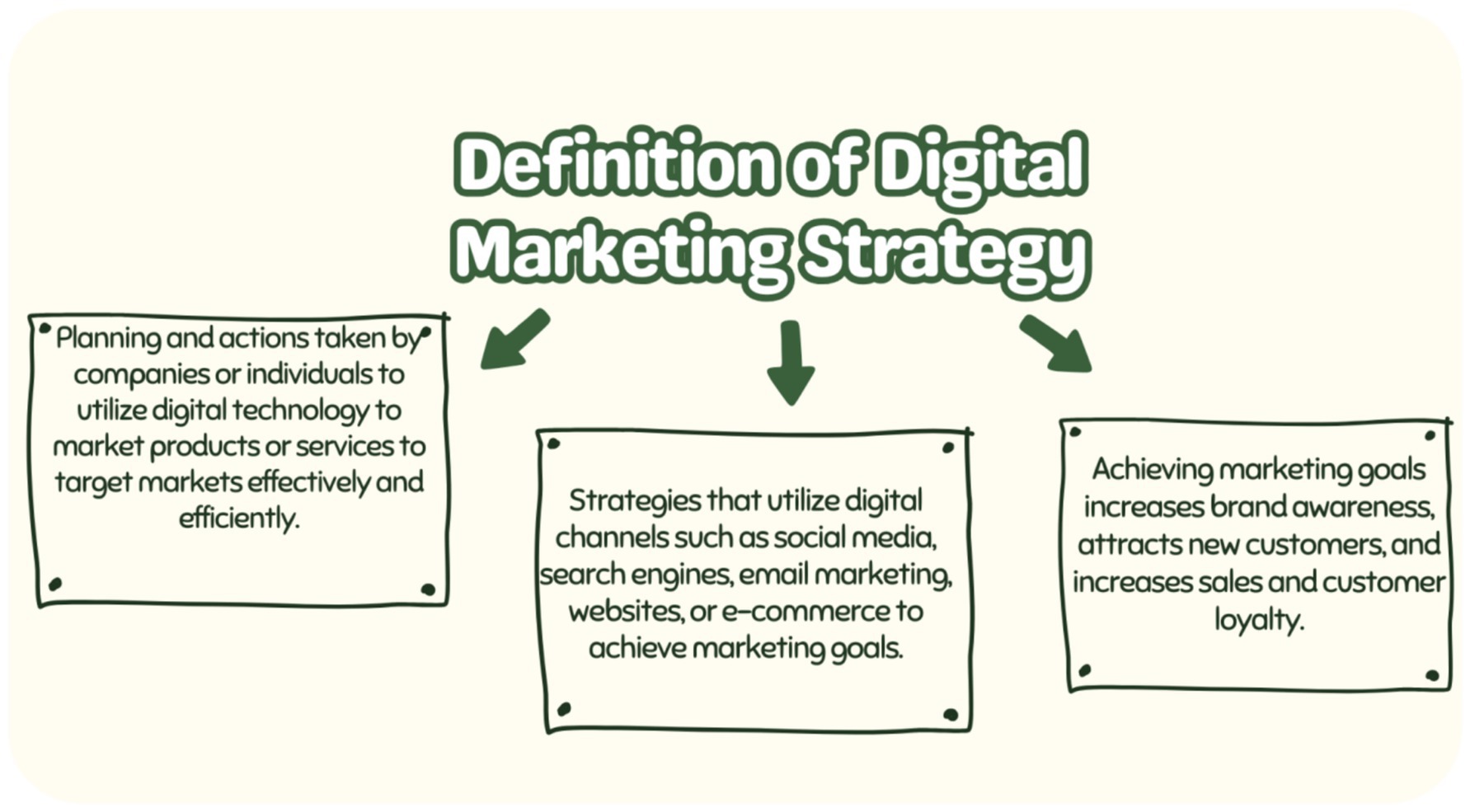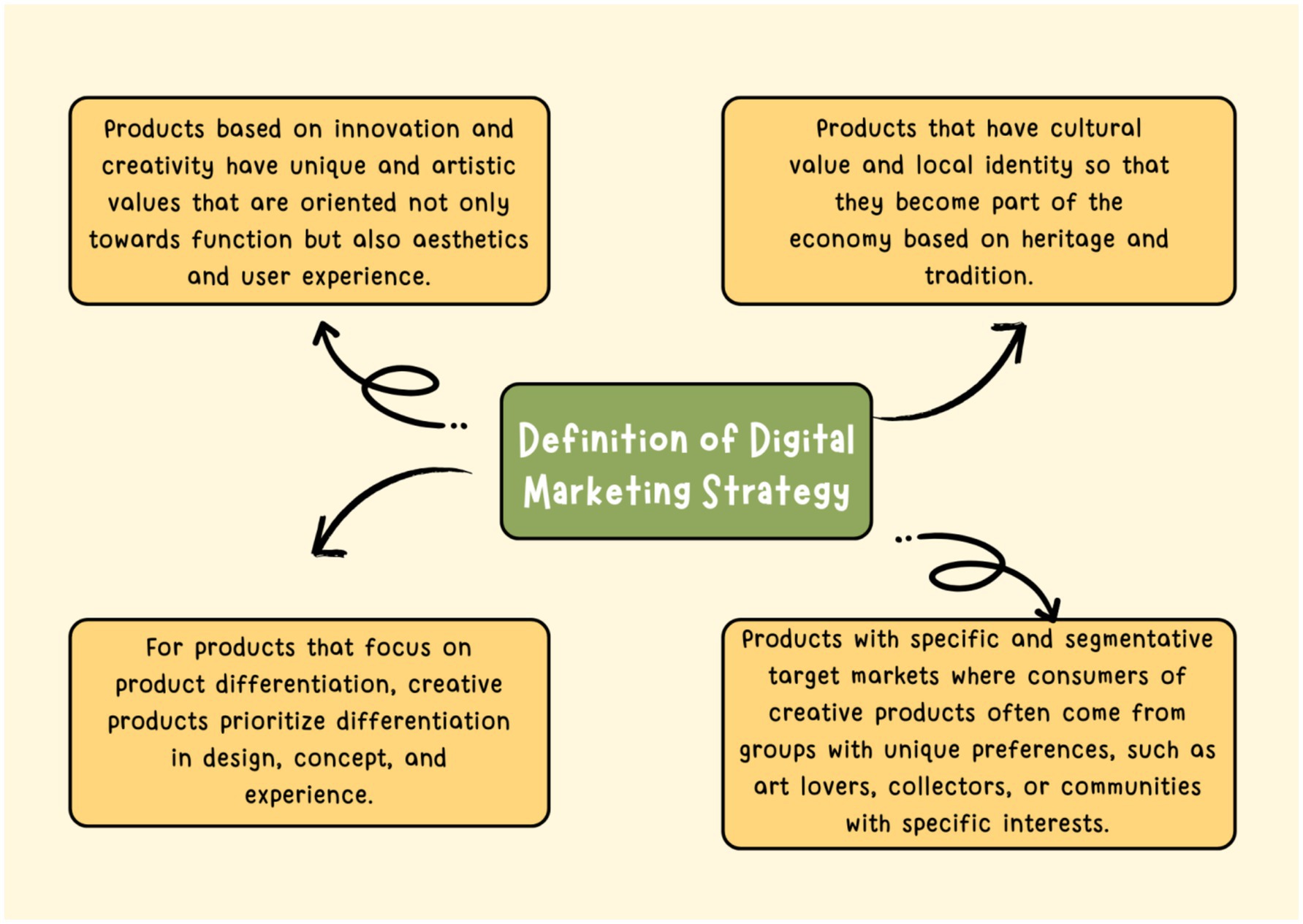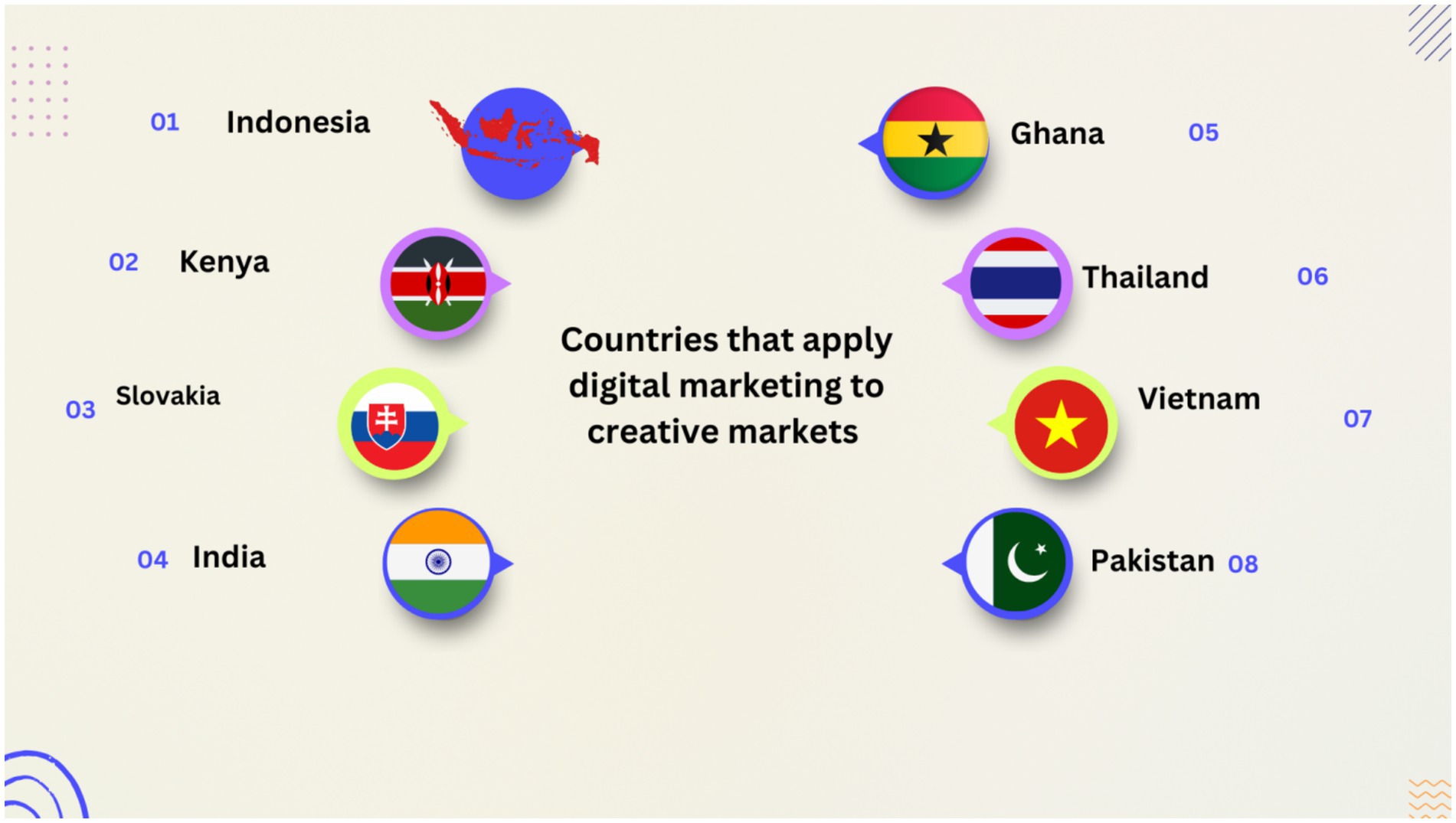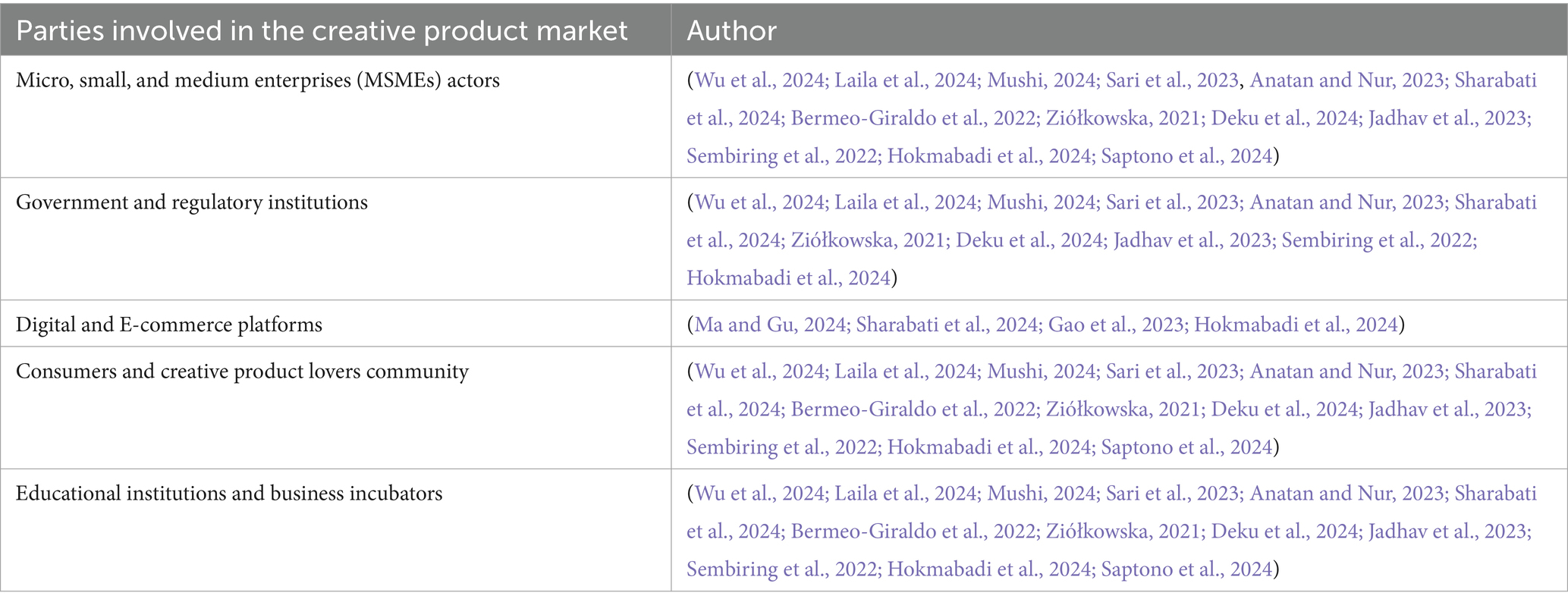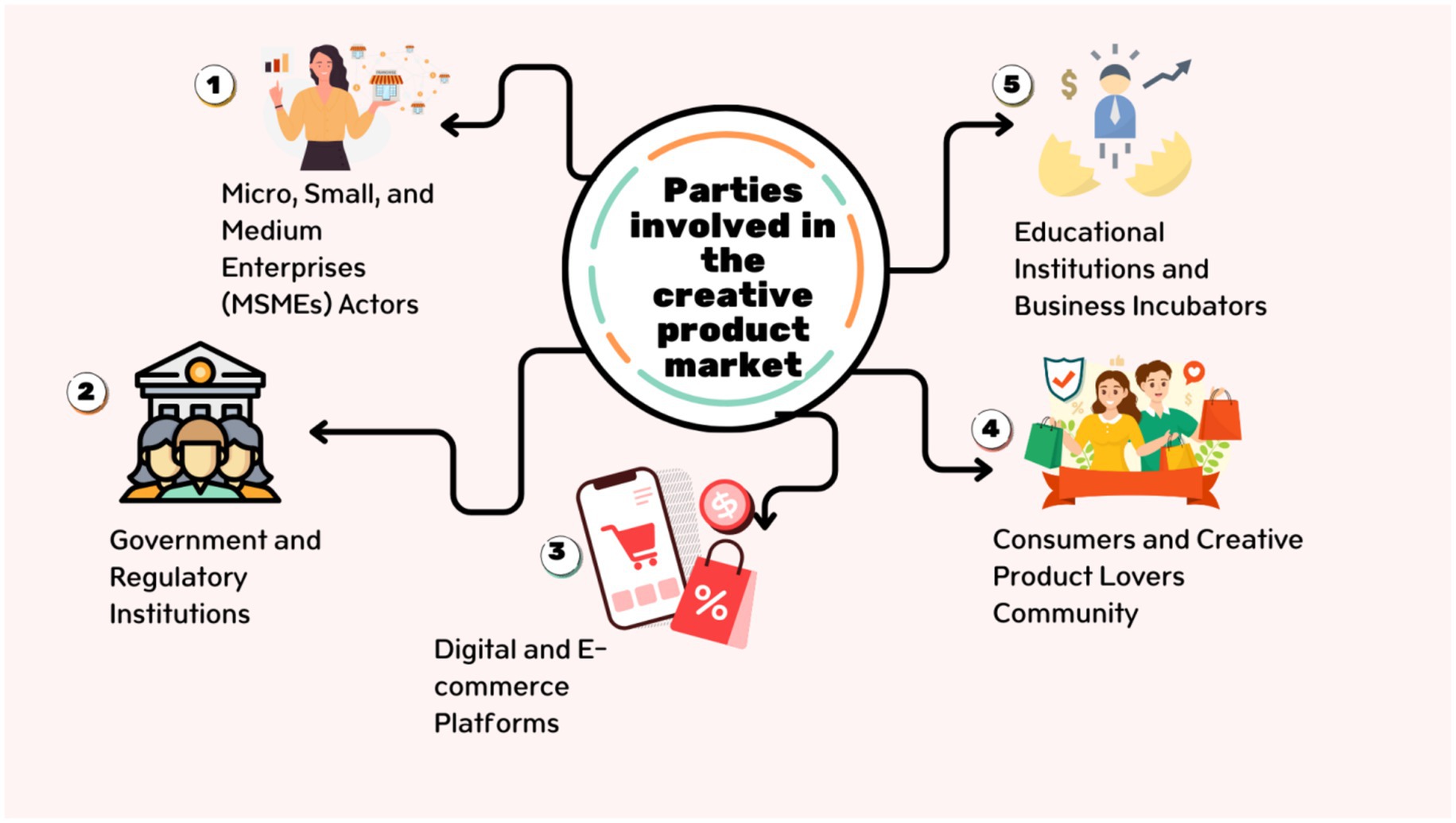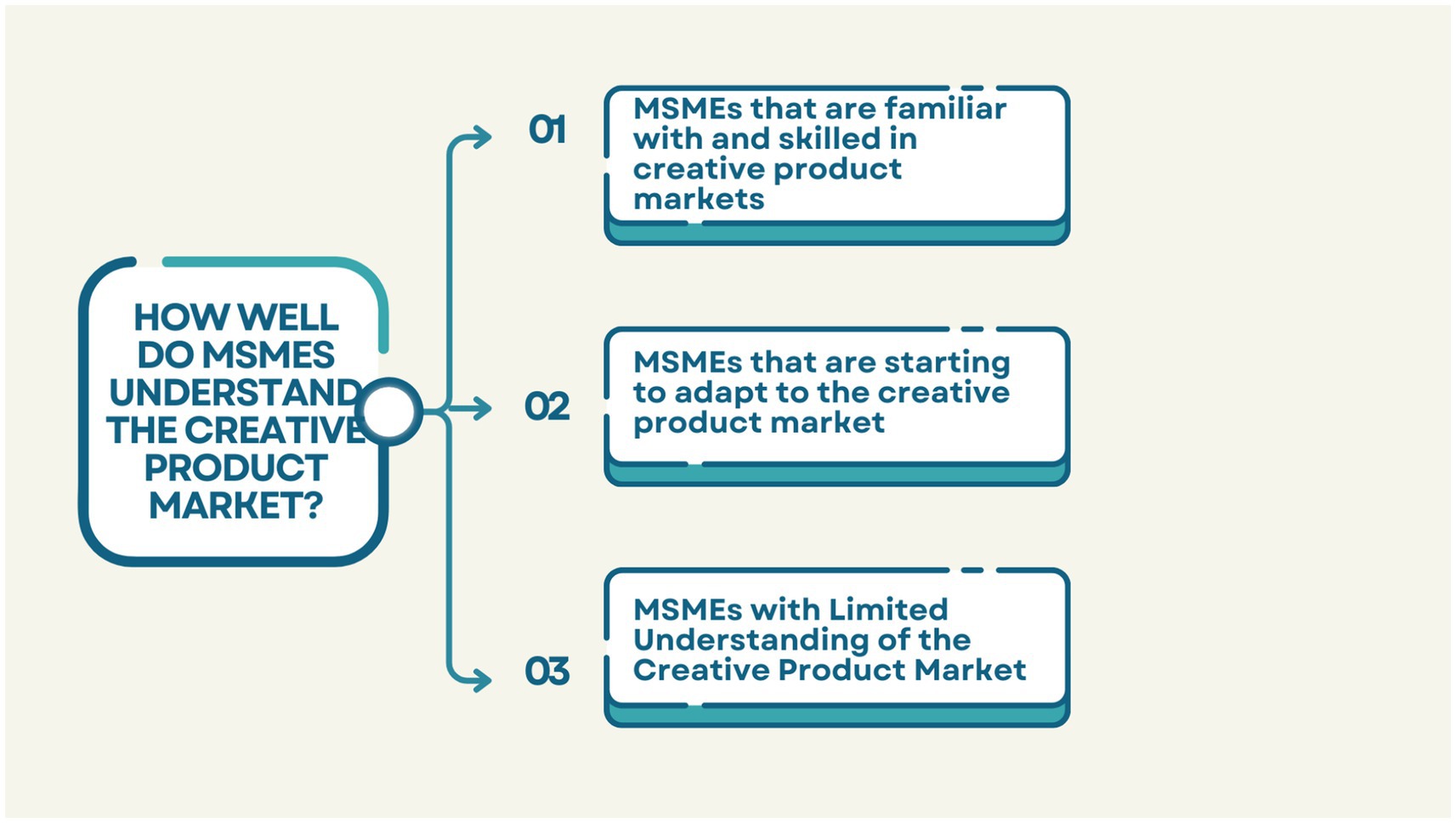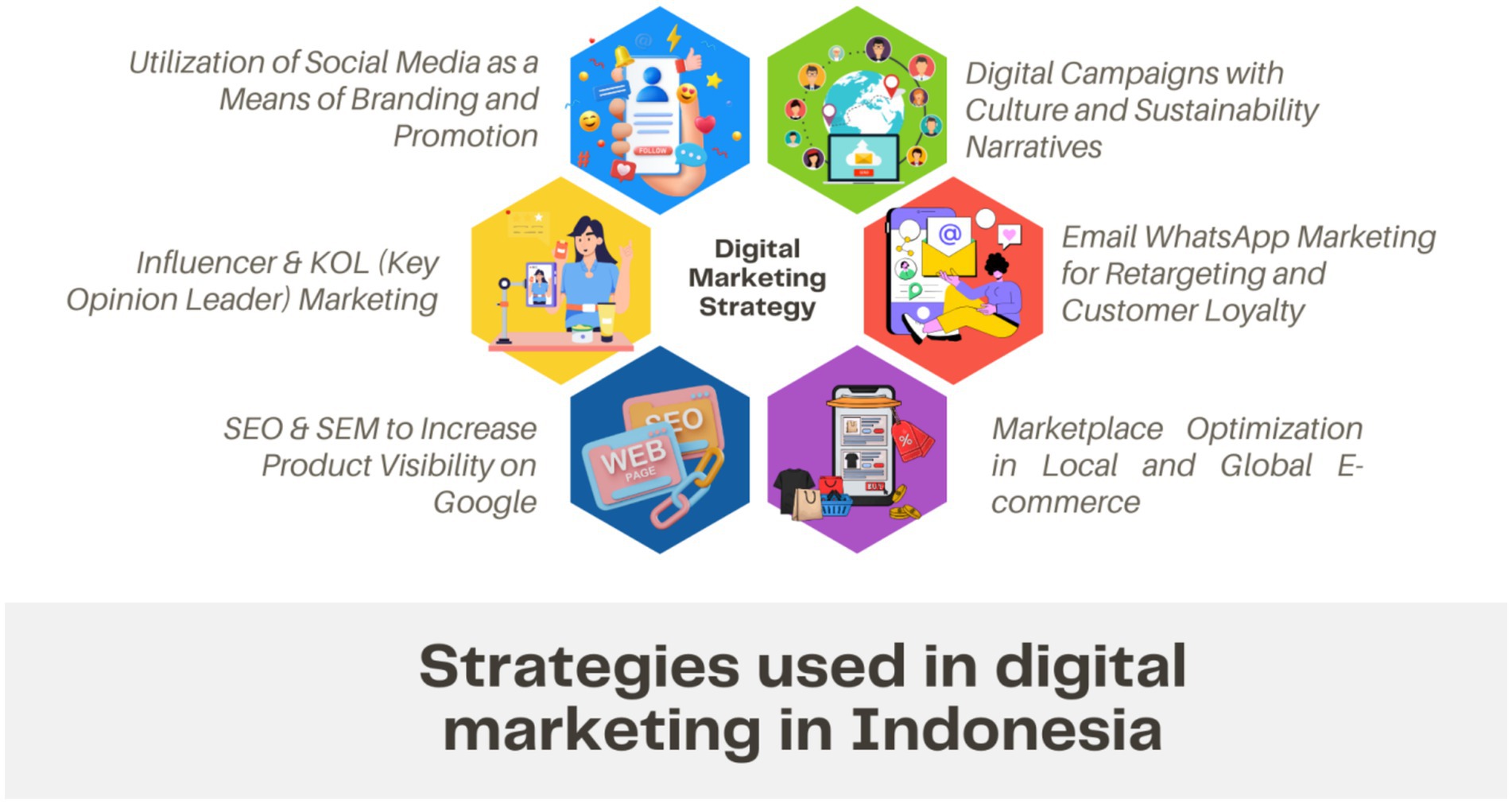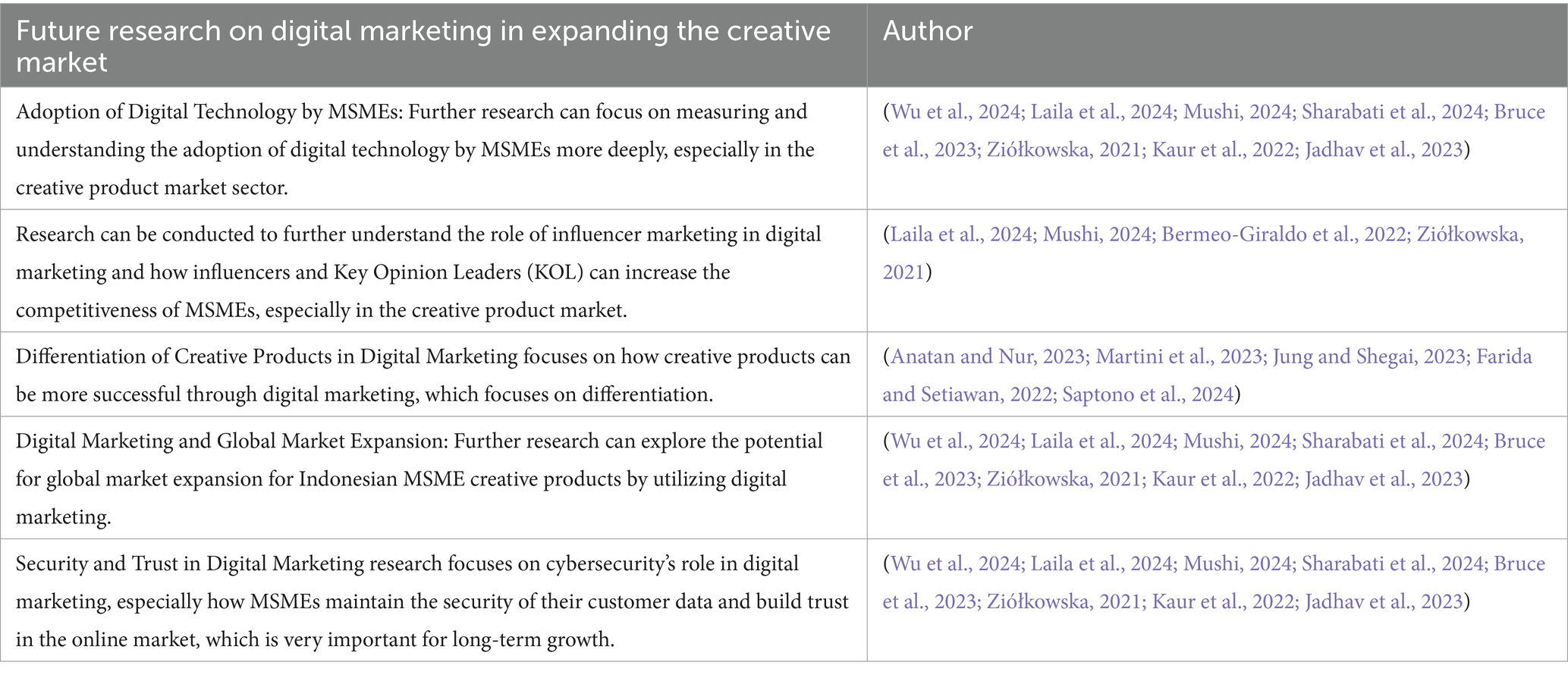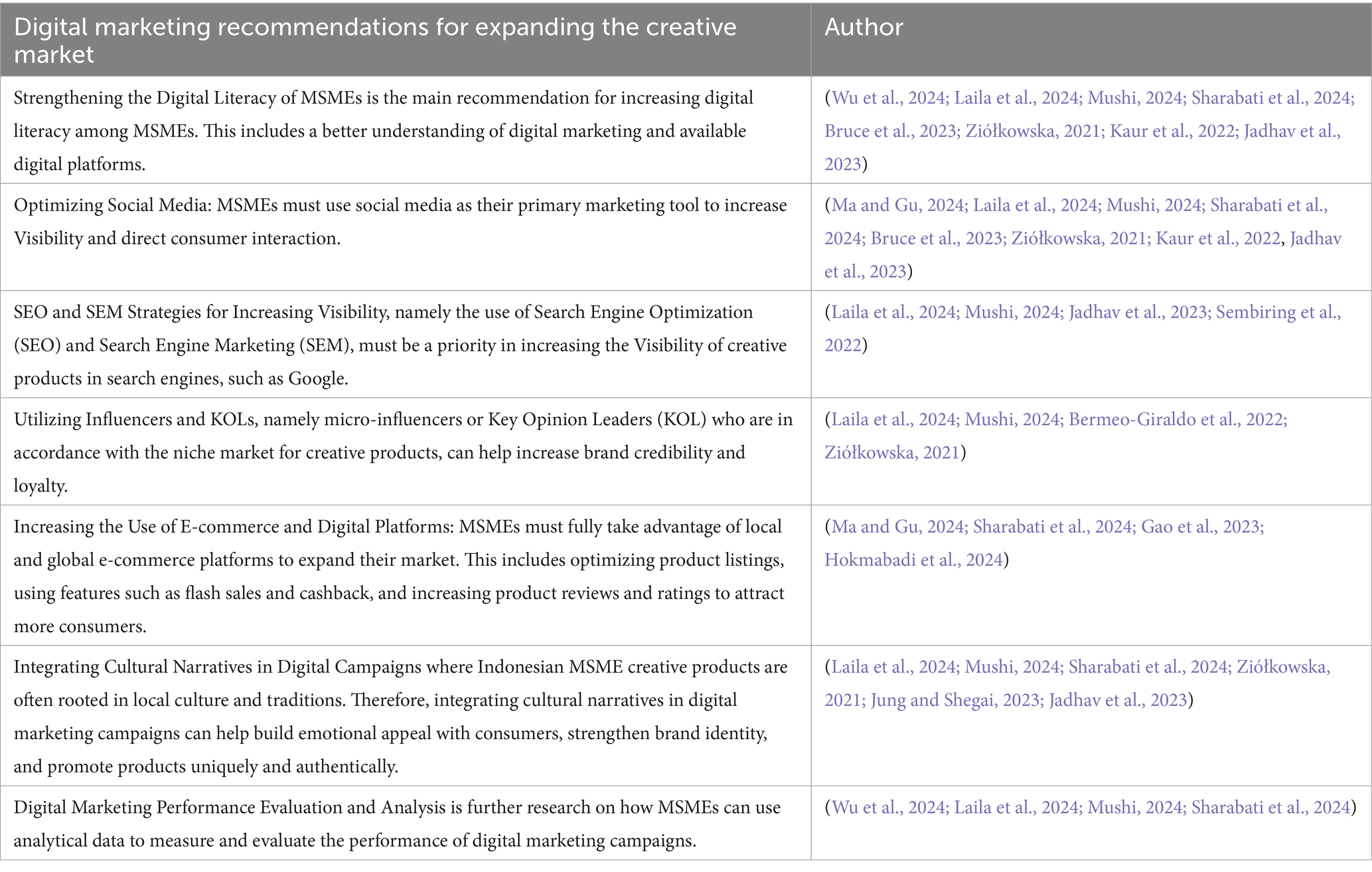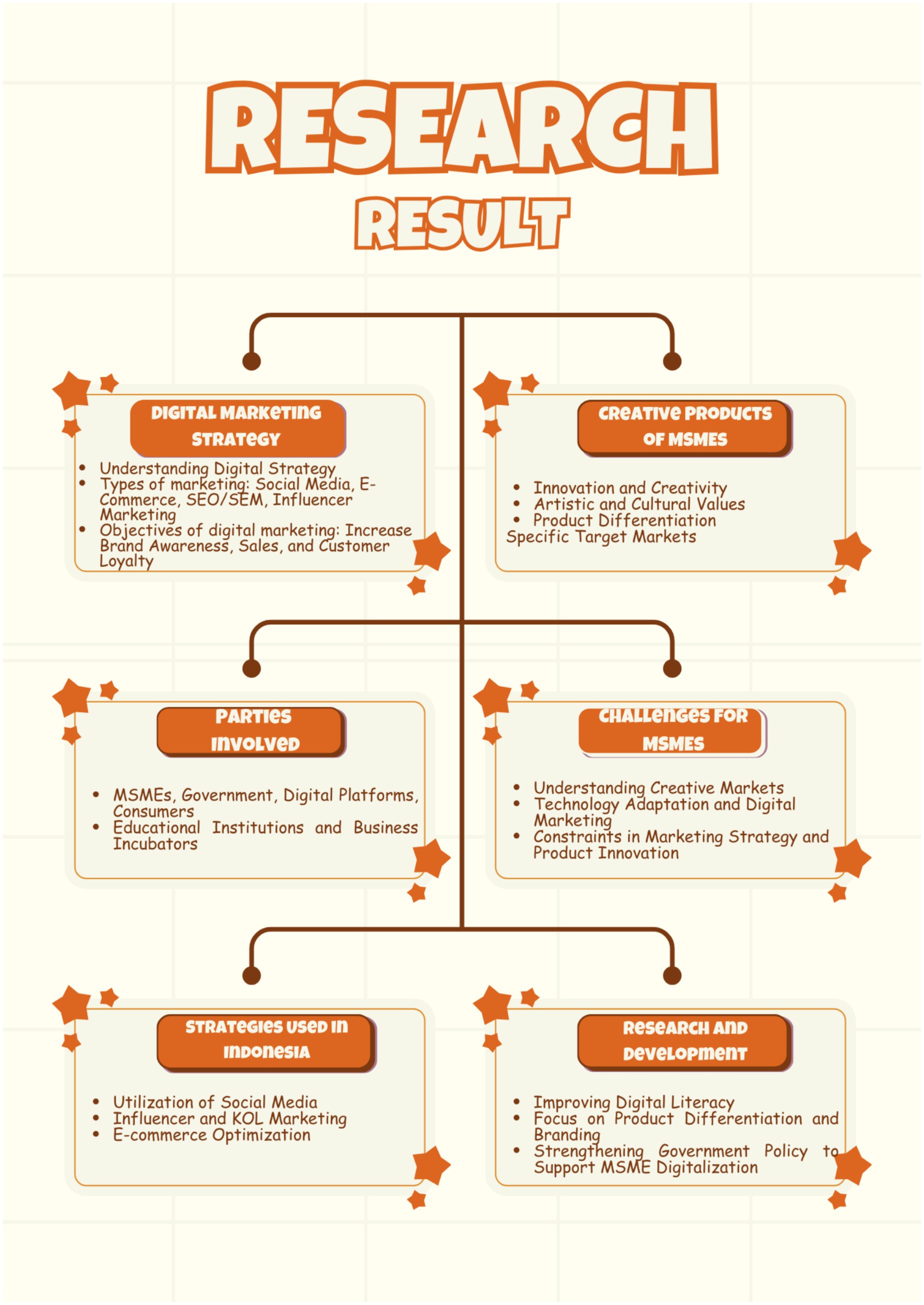- 1Universitas Negeri Malang, Malang, Indonesia
- 2Universitas Pendidikan Muhammadiyah Sorong, Sorong, Indonesia
- 3Uin Sultan Syarif Kasim, Pekanbaru, Riau, Indonesia
- 4Universitas Riau Kepulauan, Batam, Indonesia
- 5Doctoral School of University Szczecin, Szczecin, Poland
- 6Universitas Gadjah Mada, Yogyakarta, Indonesia
- 7University Teknologi Malaysia, Skudai, Malaysia
Digital marketing strategy is the planning and actions taken by companies or individuals to utilize digital technology to market products or services effectively and efficiently to target markets. In this strategy, companies use various digital channels such as social media, search engines, email marketing, websites, or e-commerce to achieve marketing objectives, including increasing brand awareness, attracting new customers, and boosting sales and customer loyalty. However, challenges in using digital marketing still exist due to the digital literacy gap among creative product practitioners. This study reviews digital marketing for creative products, including social media marketing, search engine marketing, influencer marketing, email marketing, and content marketing. Using Systematic Reviews and Meta-Analysis (PRISMA) method, 22 articles from leading sources such as MDPI, Wiley, ScienceDirect, and IEEE Xplore were analyzed. The objectives of this study are to determine (1) what the definitions of digital marketing strategies and the creative product market are. (2) Which countries have implemented digital marketing in the creative market for SMEs? (3) Who is involved, and how familiar are SMEs with the creative product market? (4) What strategies are used in digital marketing in Indonesia? How is it implemented, what are the challenges, and what is the level of success? (R5): What are the future research and recommendations for digital marketing in expanding the creative market? Future research directions include the application of AI and technology for automated content creation for creative product practitioners, strengthened digital education and literacy, and community-based campaigns that foster collaboration among local creators to build a mutually supportive ecosystem in the digital world.
1 Introduction
The digital market in the 4.0 era is a change in various economic sectors in digitalization using advanced technology. In the industrial 4.0 era, there are several important elements at play, namely technologies such as the Internet of Things (IoT), artificial intelligence (AI), big data and blockchain that drive significant changes to business processes, increase efficiency and enrich the consumer experience. The first aspect in the digital market 4.0 is the main driver in automation in the 4.0 era because IoT devices are connected via the internet to share data, this IoT will provide facilities that allow companies to monitor and manage processes in real time, improve business efficiency, and provide data-based services to customers (Ma and Gu, 2024; Wu et al., 2024; Rizvanović et al., 2023). Big data in research (Laila et al., 2024; Mushi, 2024; Sari et al., 2023) explains how big data in the 4.0 era how companies explore consumer behavior through data analysis, making it easier for companies to develop more personalized and targeted marketing strategies. The role of artificial intelligence in the 4.0 era is used to automate repetitive tasks, such as chatbots for customer service, and provide more accurate data-based predictions, allowing companies to personalize product and service offerings efficiently (Anatan and Nur, 2023; Sharabati et al., 2024; Bruce et al., 2023). Research (Gao et al., 2023; Bermeo-Giraldo et al., 2022; Ziółkowska, 2021) also explains aspects of E-commerce and digital platforms in the 4.0 era that facilitate the way of transactions between sellers and buyers. In addition, the next aspect of research (Martini et al., 2023; Jung and Shegai, 2023; Farida and Setiawan, 2022), namely cybersecurity and trust in the digital market, emphasizes that companies that successfully maintain digital security will build consumer loyalty and avoid reputational risks.
Digital marketing is important for MSMEs for several reasons. Namely, digital marketing allows large companies and MSMEs to reach consumers around the world without geographical boundaries where research (Kaur et al., 2022; Deku et al., 2024; Jadhav et al., 2023) explains the importance of digital marketing and social media for businesses in various sectors, showing a strategic impact in reaching a broader and more relevant audience, making it easier for the industry to develop business strategy. Digital marketing also functions in cost efficiency and data analysis, as in research (Sembiring et al., 2022; Hokmabadi et al., 2024; Erhan et al., 2023), which explains that digital marketing offers a more cost-effective solution than traditional marketing methods, especially for MSMEs that often have limited budgets. Digital marketing campaigns can be measured directly through data analysis, allowing companies to monitor campaign performance, assess the effectiveness of marketing strategies, and make appropriate adjustments to improve efficiency. In addition, research (Saptono et al., 2024; Afzal et al., 2024; Bryła et al., 2022) explains the reasons for using digital marketing in terms of brand strengthening and consumer engagement, which allows businesses to interact directly with consumers, build closer relationships, and create brand loyalty.
MSMEs are defined by the business size, which differs from country to country. Typically, this classification is based on the number of employees, annual revenue, or assets. In Indonesia, for example, micro-enterprises have assets of up to IDR 50 million, small enterprises have assets between IDR 50 million and IDR 500 million, and medium enterprises have assets between IDR 500 million and IDR 10 billion. There are several innovations in MSMEs, namely innovations in MSMEs (Hwang et al., 2021; Gonçalves et al., 2024), product and business model innovations (Ilieva et al., 2024; Elareshi et al., 2023), and digitalization and E-commerce in MSMEs (Xie and Madni, 2023; Wibowo et al., 2021). Research (Hwang et al., 2021; Gonçalves et al., 2024) explains that more and more businesses are adopting digital technology to increase productivity, such as e-commerce, cloud-based applications, automation, and data analytics. These technologies enable MSMEs to compete with large enterprises, expand markets, and improve customer service. Added in research (Ilieva et al., 2024; Elareshi et al., 2023) where MSMEs are considered more flexible than large companies so that product innovation and business models are easier to change or add. Likewise, research (Xie and Madni, 2023; Wibowo et al., 2021) explains that MSME innovations using digital platforms such as e-commerce make it easier for MSMEs to reach international markets cheaply.
MSMEs in different countries have unique characteristics, influenced by factors such as government policies, culture, infrastructure, and level of economic development. MSMEs in Indonesia research (Masa’deh et al., 2021; Ali Taha et al., 2021; Fondevila-Gascón et al., 2020) have a smaller business scale with a more straightforward structure. They are more engaged in traditional sectors such as agriculture, handicrafts, and culinary in terms of support. The Indonesian government also provides support, but its implementation is still being improved; MSMEs in Indonesia often face obstacles in terms of marketing, especially in penetrating international markets. Meanwhile, research (Pop et al., 2020; Ao et al., 2023) explains that MSMEs abroad have a larger business scale. MSMEs in developed countries often focus on innovation, technology, and niche services and are also more export-oriented; many governments in developed countries have programs and policies that strongly support the growth of MSMEs, such as business incubators, access to cheap credit and entrepreneurship training, MSMEs in developed countries have wider access to domestic and international markets, both online and offline.
MSME creative products are products produced by MSME actors with innovative, unique characteristics and have artistic or intellectual added value. MSME’s creative products include handicrafts, fashion, art, design, and digital products. Handicrafts in research (Lin et al., 2023; Sun and Xing, 2022; Ebrahimi et al., 2022; Bin, 2023) explain that handicrafts create distinctive art or functional items using local materials and traditional techniques such as batik, weaving, weaving, or wood carving. Added research (Sharma et al., 2021; Octasylva et al., 2022; Keelson et al., 2024; Marolt et al., 2025) about fashion by combining traditional or cultural elements with modern trends such as woven bags with ethnic motifs. Likewise, research (Surya et al., 2021; Osorno-Hinojosa et al., 2023; Syamsari et al., 2022; Kustiningsih et al., 2022) in developing innovative culinary products by lifting local or traditional elements but processed with modern innovations to reach broader consumers. Conversely, in research (Li et al., 2023; Ridwan Maksum et al., 2020; Bradač Hojnik and Huđek, 2023; Satpathy et al., 2025), digital products are included in the category of creative products because they can be used to educate people with educational content based on local culture.
Experimental research on MSMEs in research (Surya et al., 2021; Mujiatun et al., 2023; Osano, 2019; Tambunan, 2019; Aminullah et al., 2024; Cunningham et al., 2023; Tereshchenko et al., 2024; Adam and Alarifi, 2021; Tatik and Setiawan, 2024; Sitaniapessy et al., 2022; Gunawan, 2024; Le et al., 2023) has a similar discussion namely the main focus is the application of technology, innovation, and marketing strategies in improving the performance and competitiveness of MSMEs, which are used to measure MSME performance, either in terms of increasing revenue, productivity, or scale of operations.
Meanwhile, the literature review research (Le et al., 2023; Hernita et al., 2021) discusses digital transformation in MSMEs. Research (Yuwono et al., 2025; Tarihoran et al., 2023; Wahyudiono, Aini, et al., 2024; Hastuti et al., 2023) discusses the innovations that MSMEs have made in expanding the reach of consumers. Likewise, research on financial literacy in MSMEs (Manioudis and Angelakis, 2023; Jaidi et al., 2022) research (Onegina et al., 2025; Dash and Chakraborty, 2021; Korucuk et al., 2022) discusses how the role of government and its relationship with MSMEs in expanding the MSME creative market. From the paper review above, no one has explained digital marketing strategies for expanding the market for MSME creative products in Indonesia. This review paper aims to comprehensively review digital marketing strategies in expanding the MSME creative product market in Indonesia, contribute to the digitalization of MSMEs, and provide digital marketing applications in MSMEs.
Therefore, this SLR research needs to be conducted because there are already many field papers, while review papers are still few and only discuss parts of digital marketing and creative products separately. This paper conducts SLR research by combining the two. In addition, there are no review papers that focus on Indonesia.
2 Methods
The methods and materials used serve as a guide in identifying relevant articles within the established categories to examine digital marketing strategies for expanding Indonesia’s SMES creative products market. The PRISMA method (Adhan, 2025) application of the PRISMA framework enables the systematic identification, review, and synthesis of evidence from various sources, resulting in a literature review with a high level of novelty and validity. This methodology involves four processes: (1) identification of the Research Question (RQ), (2) identification of article sources, (3) article search based on RQ, (4) analysis of search results.
2.1 Reseach question identification (RQ)
The systematic literature review was organized to answer research questions about digital marketing strategies for expanding Indonesia’s MSMEs creative products markets. The focused research questions are:
(RQ1): What is the definition of digital marketing strategy and the definition of creative product market?
(RQ2): Which countries have implemented digital marketing in creative markets in MSMEs?
(RQ3): Who is involved, and how familiar are MSMEs with creative product markets?
(RQ4): What strategies are used in digital marketing in Indonesia? How is it implemented, what are the challenges, and what is the success rate of digital marketing in Indonesia?
(RQ5): What are the future research and recommendations for digital marketing in expanding the creative market?
2.2 Collecting relevant articles
Research on digital marketing strategies in MSMEs has been widely published, but this literature review focuses on a collection of relevant research. This research is taken from papers or proceedings indexed in MDPI, IEEE, TaylorandFrancis, and Elsevier, which are all registered with Scopus. This research uses a time span between 2010 and 2024 with the aim that the research is still relevant to the current time.
The papers selected must use English and the keywords “digital marketing,” “MSMEs,” and “creative products.” Table 1 describes the selected papers, with details of the author, reference, publisher, and year of publication, to present overall data about the papers reviewed.
2.3 Selecting papers that match the research question (RQ)
Research questions based on the keywords “digital marketing,” “MSMEs,” and “creative products” with the criteria of English-language papers with a full text published between 2021 and 2024. The selection of papers that match these criteria uses the inclusion and exclusion method described in Table 2.
Through specific categories and keyword searches, we identified 74 papers listed on Scopus (MDPI, Taylor&Francis, Elsevier). We then applied the year of publication criteria from 2019 to 2024, resulting in 72 articles that met the year criteria and were written in English (Figure 1).
Twenty-two articles were selected based on Scopus indexed journals and proceedings from 2019 to 2024. Research on digital marketing and economic creative markets based on journal publication years from 2021 to 2024 as follows: journals published in 2019 (9%), 2020 (5%), 2021 (14%), 2022 (23%), 2023 (32%), and 2024 (18%). Meanwhile, based on countries that have implemented digital marketing in creative markets in MSMEs, there is the following data: Indonesia (63%), Kenya (5%), Slovakia (5%), India (5%), Ghana (5%), Thailand (5%), Vietnam (5%), and Pakistan (5%). Figure 2 below explains the categorization of papers based on the PRISMA method. Figure 2 shows the year of publication based on 22 selected journals from 2019 to 2024. Meanwhile, Figure 3 shows which countries have implemented digital marketing in creative markets in MSMEs based on 22 selected journals from 2019–2024.
2.4 Analyzing selected articles
This research highlights the essential role of digital technologies—such as the Internet of Things (IoT), artificial intelligence (AI), and big data—in transforming how Indonesian MSMEs operate and engage with customers, especially in marketing creative products. It reveals that digital marketing enhances operational efficiency, broadens audience reach, and provides cost-effective alternatives to conventional marketing strategies. However, MSMEs exhibit varied levels of digital literacy and limited use of innovation in technology and products. The findings underscore the urgency of improving digital competencies, particularly in branding, product differentiation, and market expansion through social media, e-commerce, and influencer collaborations. These enhancements are pivotal for strengthening competitiveness and penetrating international markets, as well as leveraging data-driven approaches to build customer loyalty (Figure 4).
3 Results and discussion
Based on the research results, digital marketing strategies play a crucial role in expanding the market for creative products of MSMEs in Indonesia. Findings show that digital technologies like the Internet of Things (IoT), artificial intelligence (AI), and big data enable MSMEs to improve operational efficiency, reach a wider audience, and optimize marketing costs. Nonetheless, the level of MSMEs’ understanding of the application of these digital technologies still varies, with most MSMEs in Indonesia still limited in their use of digital platforms and product innovation. Therefore, this research suggests improving digital literacy and digital marketing capacity for MSMEs and encouraging the utilization of social media, e-commerce, and influencers to expand the market for creative products, including in international markets. The results and discussion of this research are explained based on several research questions (RQ) obtained.
The government initiative titled “The Role of Government Programs in the Adoption of Digital Strategies in MSMEs” aims to foster digital transformation among micro, small, and medium enterprises (MSMEs) in Indonesia. This transformation is crucial, particularly for expanding the market for creative goods. A key program supporting this initiative is PROPER (Company Performance Rating Program), which evaluates and promotes company performance in environmental, social, and governance (ESG) areas. While typically associated with large corporations, the principles of PROPER can also benefit SMEs. PROPER contributes to digital transformation by offering a framework for SMEs to align their digital initiatives with broader social and environmental objectives. It encourages SMEs to create digital marketing strategies that focus on transparency, ethical conduct, and building consumer trust. The Indonesian government has increasingly acknowledged the crucial role of SMEs in the national economy, especially within the digital economy. By incorporating PROPER assessments into digitalization support programs, specifically those from the Ministry of Communication and Information Technology (Kominfo), SMEs can access targeted assistance for implementing digital tools. Moreover, incentive schemes tied to PROPER can further motivate SMEs to embrace digital technologies. For instance, businesses that fulfill certain digital performance standards—like enhancing their online market presence or leveraging data analytics for precise marketing—can earn recognition or rewards in PROPER evaluations. These incentives foster an environment conducive to technological investment, prompting SMEs to seek innovative ways to digitize their operations and marketing activities. Additionally, PROPER highlights the social dimensions of business conduct. For SMEs, this entails adopting digital strategies that not only improve market access but also create positive social effects. Digital marketing can enable SMEs to highlight local culture, support community-based production, and engage in fair trade, all of which appeal to a growing base of socially aware consumers. By implementing these responsible digital strategies, SMEs can effectively align with PROPER’s goals and meet the demands of the digital marketplace.
Based on the selected articles in this study that discuss digital marketing and creative product markets, the general mind map developed by the researchers based on the results of the 22 articles reviewed is shown in Figure 5.
3.1 (RQ1): What is a digital marketing strategy, and what is a creative product market?
Digital marketing strategy is the planning and actions companies or individuals take to utilize digital technology to market products or services to the target market effectively and efficiently. In this strategy, companies use various digital channels such as social media, search engines, email marketing, websites, or e-commerce to achieve marketing goals, which include increasing brand awareness, attracting new customers, and increasing sales and customer loyalty. Some of the important components of a digital marketing strategy include selecting the right target market, using appropriate digital channels, search engine optimization (SEO), campaign data analysis, and utilizing influencer marketing and marketing automation.
The creative product market is an economic ecosystem that produces, distributes, and consumes goods or services based on creativity, innovation, and cultural values. Products in this market often include goods that are not only oriented toward function but also toward esthetics and user experience, such as handicrafts, fashion design, art, innovative culinary, and digital products. Key characteristics of the creative product market include unique product differentiation and distinctive cultural value or local identity. This market involves creative industry players who create products with elements of art and functionality and target consumers with specific preferences, such as art lovers, collectors, or community groups with specific interests. Specific findings can be seen in Tables 3, 4.
Digital marketing strategy is the planning and actions taken by companies or individuals in utilizing digital technology in marketing products or services to target markets effectively and efficiently (Ma and Gu, 2024; Rizvanović et al., 2023; Bruce et al., 2023; Jung and Shegai, 2023). Strategies that utilize digital channels such as social media, search engines, email marketing, websites, or e-commerce to achieve marketing goals (Ma and Gu, 2024; Wu et al., 2024; Mushi, 2024; Gao et al., 2023; Jung and Shegai, 2023; Sembiring et al., 2022). This digital marketing aims to increase brand awareness, attract new customers, and increase sales and customer loyalty (Wu et al., 2024; Rizvanović et al., 2023; Laila et al., 2024; Sharabati et al., 2024; Erhan et al., 2023; Saptono et al., 2024). In a digital marketing strategy, several main components must be considered, namely determining the target market, choosing the right digital channel, free and paid search engine optimization, how to present marketing content, whether or not influencer marketing and email and marketing automation are applied and data analysis and evaluation of the strategies used. An explanation of the definition of digital marketing strategy is summarized in the Figure 6.
The creative product market is an economic ecosystem that focuses on producing, distributing, and consuming goods or services based on creativity, innovation, and cultural values. This market involves individuals or companies that develop products with esthetic elements, functionality, and uniqueness as the primary added value. Creative products often originate from the creative industry sector, covering various fields such as graphic design, fashion, performing arts, film, music, innovative culinary, handicrafts, and software and game development (Anatan and Nur, 2023; Martini et al., 2023; Jung and Shegai, 2023; Farida and Setiawan, 2022; Saptono et al., 2024).
Some of the characteristics of creative product markets are based on innovation and creativity, have cultural values and local identity (Rizvanović et al., 2023; Anatan and Nur, 2023; Sembiring et al., 2022), focus on product differentiation (Anatan and Nur, 2023; Martini et al., 2023; Jung and Shegai, 2023; Farida and Setiawan, 2022; Saptono et al., 2024), and specific and segmented target markets. Some examples of creative products are arts and crafts, design and fashion, media and entertainment, creative culinary, and creative technology (Mushi, 2024; Anatan and Nur, 2023; Bruce et al., 2023, Sembiring et al., 2022; Figure 7).
3.2 (RQ2): Which countries have implemented digital marketing in creative markets in MSMEs?
Based on the selected papers in this study, the following countries have implemented digital marketing in creative markets in MSMEs: Indonesia (63%), Kenya (5%), Slovakia (5%), India (5%), Ghana (5%), Thailand (5%), Vietnam (5%), and Pakistan (5%).
Based on the explanation above, it can also be concluded through the following Figure 8.
3.3 (RQ3): Who is involved, and how aware are MSMEs of creative product markets?
In digital marketing of the MSME product market, several parties are involved, namely the MSME actors themselves, government and regulatory agencies, digital and e-commerce platforms, consumers and communities of creative product lovers, educational institutions, and business indicators. Of course, each party involved has its role in efforts to expand the creative product market. Tables 5, 6 below explain the details of who is involved and how well MSMEs understand the creative product market.
The parties involved in the creative product market include micro, small and medium enterprises (MSMEs; Wu et al., 2024; Laila et al., 2024; Mushi, 2024; Sari et al., 2023; Anatan and Nur, 2023; Sharabati et al., 2024; Bermeo-Giraldo et al., 2022; Ziółkowska, 2021; Deku et al., 2024; Jadhav et al., 2023; Sembiring et al., 2022; Hokmabadi et al., 2024; Saptono et al., 2024) which are one of the main actors in the creative product market, creating products based on innovation, culture, and creativity, such as batik artisans, local fashion designers, handmade accessories manufacturers, innovative culinary makers, and creative technology startups. Government and regulatory agencies (Wu et al., 2024; Laila et al., 2024; Mushi, 2024; Sari et al., 2023; Anatan and Nur, 2023; Sharabati et al., 2024; Ziółkowska, 2021; Deku et al., 2024; Jadhav et al., 2023; Sembiring et al., 2022; Hokmabadi et al., 2024) play a role in supporting the creative market ecosystem through policies, regulations, and assistance programs such as training, tax incentives, and access to financing. Digital platforms and e-commerce (Ma and Gu, 2024; Sharabati et al., 2024; Gao et al., 2023; Hokmabadi et al., 2024), such as Shopeee and Tokopedia, help MSMEs reach a wider market. Social media can also be used as the primary marketing tool for creative products. Consumers and communities of creative product lovers (Wu et al., 2024; Laila et al., 2024; Mushi, 2024; Sari et al., 2023; Anatan and Nur, 2023; Sharabati et al., 2024; Bermeo-Giraldo et al., 2022; Ziółkowska, 2021; Deku et al., 2024; Jadhav et al., 2023; Sembiring et al., 2022; Hokmabadi et al., 2024; Saptono et al., 2024) are individuals who appreciate creative works, both domestically and internationally. Specific communities, such as art collectors, fashion enthusiasts, and gamers, are potential markets for creative products. Educational institutions and business incubators that support MSMEs with training, market research, and digital skills development. Examples are universities with creative economy programs, coworking spaces, and startup accelerators (Figure 9).
MSMEs’ understanding of the creative product market is categorized into several categories, namely MSMEs that already understand and are skilled in the creative product market with the criteria of MSMEs (Ma and Gu, 2024; Wu et al., 2024; Rizvanović et al., 2023; Laila et al., 2024; Sharabati et al., 2024; Jung and Shegai, 2023; Farida and Setiawan, 2022; Kaur et al., 2022; Hokmabadi et al., 2024; Erhan et al., 2023) that already understand creative industry trends, digital marketing strategies, and the importance of product differentiation, actively using e-commerce, social media, and digital marketing to increase sales. MSMEs that are starting to adapt to the creative product market (Bruce et al., 2023; Gao et al., 2023; Ziółkowska, 2021; Jung and Shegai, 2023; Deku et al., 2024; Jadhav et al., 2023; Hokmabadi et al., 2024) with the criteria of starting to realize the importance of creativity and branding in business, using several digital platforms, but still experiencing obstacles in marketing strategies and product innovation. MSMEs still lack an understanding of the creative product market (Martini et al., 2023; Jadhav et al., 2023; Hokmabadi et al., 2024) with the criteria that they are still oriented toward conventional production and do not understand how creativity can increase the added value of products and difficulties in utilizing digital technology for marketing and distribution (Figure 10).
3.4 (RQ4): What strategies are used in digital marketing in Indonesia? How is it implemented, what are the challenges, and what is the success rate of digital marketing in Indonesia?
In using digital marketing strategies in Indonesia, especially the creative product market, you can use several methods that have been in previous research, namely the use of social media for branding and promotion, the use of influencers and KOLs in marketing creative products, SEO and SEM optimization to master keyword searches on Google, local and international marketplace optimization, the use of email marketing and Whatsapp marketing for retargeting customers, and providing content that is relevant to the creative product market itself so that all strategies used can expand the market of the creative product itself.
The strategies used in digital marketing in Indonesia (Laila et al., 2024; Mushi, 2024; Sharabati et al., 2024; Ziółkowska, 2021; Jung and Shegai, 2023; Jadhav et al., 2023) are the Utilization of social media as a means of branding and promotion, influencer and KOL (Key Opinion Leader) marketing, SEO, and SEM to increase product visibility on Google, marketplace optimization in local and global E-commerce. Utilization of social media (Wu et al., 2024; Laila et al., 2024; Mushi, 2024; Sharabati et al., 2024; Bruce et al., 2023; Ziółkowska, 2021; Kaur et al., 2022; Jadhav et al., 2023) as a means of branding and promotion is carried out with visual storytelling strategies, hashtag marketing, live shopping and streaming, and encouraging customers to create content with the products purchased. Influencer & KOL (Key Opinion Leader) marketing (Laila et al., 2024; Mushi, 2024; Bermeo-Giraldo et al., 2022; Ziółkowska, 2021) is done by using micro-influencers to increase customer engagement and trust, collaborating with celebrities and KOLs with the appropriate niche to increase product credibility, using affiliate marketing with influencers where they get a commission from each product sold. SEO & SEM (Laila et al., 2024; Mushi, 2024; Jadhav et al., 2023; Sembiring et al., 2022) to increase product visibility on Google using SEO strategies for website optimization and product description with relevant keywords such as “unique handicrafts,” “quality local shoes,” and “minimalist home decor,” SEM by using Google Ads to increase traffic and sales conversions, Google My Business by registering the business to increase local visibility. Marketplace optimization in local and global E-commerce (Ma and Gu, 2024; Sharabati et al., 2024; Gao et al., 2023; Hokmabadi et al., 2024) uses the product title and description optimization strategies, flash sale, and cashback features, increasing reviews and ratings, and advertising within the marketplace, such as Shopee and Tokopedia ads (Figure 11).
How is it implemented, what are the challenges, and what is the success rate of digital marketing in Indonesia?
Digital marketing implemented in Indonesia has several channels, namely social media, Search Engine Marketing (SEM), Influencer marketing, email marketing, and content marketing. All types of digital marketing are carried out using technology that is appropriate for the creative product audience. The challenges of using digital marketing for creative products in Indonesia include varying levels of digital literacy, resulting in a gap among creative product practitioners in utilizing digital marketing, competition, and advertising costs that significantly drain business revenues, as advertising costs require a considerable amount of time, leading to social media algorithms that favor advertised businesses, Infrastructure challenges also arise because not all regions in Indonesia have internet access. There are issues of trust and privacy, as some consumers remain hesitant to provide personal data when making online purchases. Despite these challenges, the success rate of digital marketing among creative product practitioners has shown consistent growth, particularly in the F&B, fashion, and online education sectors. UMKM Go Digital is a government program aimed at helping thousands of small businesses enter the digital market. Additionally, campaigns with a localized approach (localization of language, culture, and narrative) are more successful than a one-size-fits-all approach.
3.5 (RQ5): What are the future research and recommendations for digital marketing in expanding the creative market?
The future research of this study is the adoption of digital technology by MSMEs, which further focuses on its application, the role of influencer marketing in digital marketing, differentiation of creative products in digital marketing, digital marketing, and global market expansion and security, and trust in digital marketing that focuses on cybersecurity (Islam et al., 2024; Gündüzyeli, 2024; Altamira et al., 2023; Matosas-López, 2021). Meanwhile, in realizing this future research, several recommendations are needed in digital marketing that must be carried out by MSMEs, namely Strengthening MSME Digital Literacy, Optimizing Social Media, SEO and SEM Strategies to Increase Visibility, Utilizing Influencers and KOLs, Increasing the Use of E-commerce and Digital Platforms, Integrating Cultural Narratives in Digital Campaigns, Evaluation and Analysis of Digital Marketing Performance which are explained in Tables 7–9 and Figure 12.
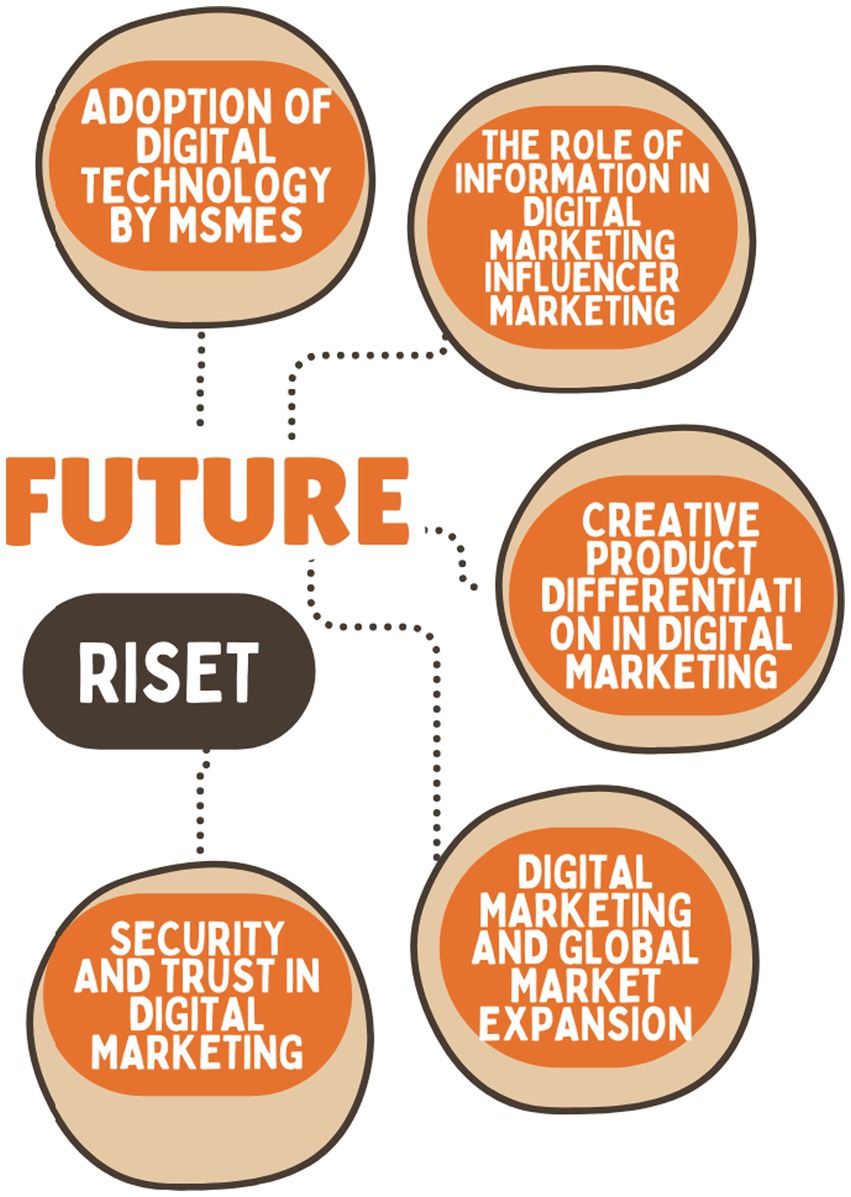
Figure 12. Future Research of Digital Marketing Strategies in Expanding the Market for MSME Creative Products in Indonesia – State of the Art.
4 Implications, limitations, and future work in digital Marketing for Creative Product
4.1 Implications
The implications of digital marketing on creative products empower creators and MSMEs to build personal brands without the need for significant capital, enabling them to reach national and international markets through e-commerce and social media. In digital marketing, narrative becomes a branding strength because creative products are not only valued for their function, but also for the stories and values behind them. Digital marketing enables businesses to collect data as a new asset, allowing them to measure the effectiveness of their campaigns and personalize content to align with their audience.
4.2 Limitations
There are several limitations to digital marketing for creative products, including limited access to technology and literacy, competition in the creative product market itself, visual and product representation constraints, and algorithm volatility. In terms of limited access to technology and literacy, many creative entrepreneurs in rural areas do not have adequate access to digital marketing training, and skills such as SEO, graphic design, or paid advertising remain a challenge. Competition in the creative market itself is highly competitive, making it difficult to stand out among numerous creative products. Visual and product representation challenges arise because not all practitioners have photography or videography skills. Algorithm volatility also occurs because digital platform algorithms frequently change, making content visibility unstable, causing small businesses to suddenly lose reach without understanding the cause.
4.3 Future work
This research has future research directions, including the application of AI and technology for automated content creation to assist businesses. Digital education and inclusion require strengthening digital literacy among creative economy actors, particularly in non-urban areas. Community-based campaigns hold promise for the future of creative digital marketing when brands engage communities (co-creation), where collaboration among local creators can foster a mutually supportive ecosystem in the digital world. Sustained research requires more studies on the effectiveness of digital marketing strategies in specific creative subsectors (e.g., ethnic fashion, bamboo crafts, digital art). Measurement should not only focus on sales but also on social impact, cultural identity, and sustainability.
Based on the explanation of the research above, it can be concluded in the following Figure 13.
Based on the image of the research results above, it is concluded that in marketing creative products, several appropriate strategies are needed to know what marketing is used and what the purpose is so that the marketing carried out can expand the market for the creative product itself. The creative product must have several criteria: innovation and creativity, cultural value, differentiation, and a specific market. In marketing creative products, several parties are involved, namely MSMEs, the government, digital platforms, consumers, educational institutions, and business incubators. Although the strategy is known, there are still challenges for MSMEs in marketing their creative products: a lack of understanding of the creative product itself, challenges in adapting digital technology in the digital marketing of creative products, and lack of innovation in making the creative product itself. Challenges are always there, but MSME actors can overcome them using more personal strategies; in other words, the most mastered strategy can be in the form of utilizing social media if only social media can be used, utilizing influencers when social media is adequate, and using e-commerce platforms to reach target markets that are not touched on social media.
5 Conclusion
This systematic review, based on the PRISMA method, analyzed 22 relevant studies from leading databases (MDPI, Wiley, ScienceDirect, Sage, IEEE Xplore, Chemical Science, Springer, and Elsevier) to explore digital marketing strategies in expanding the market for MSME creative products in Indonesia. The research findings reveal what digital marketing is, which countries use digital marketing for their creative products, how it is implemented, and the outcomes of its use, as well as the digital marketing strategies employed in Indonesia.
However, there are still limitations in the use and application of digital marketing for creative products in Indonesia. Future research should prioritize how digital marketing can elevate creative products to broader markets, thereby achieving the global marketing objectives for these creative products.
Data availability statement
The original contributions presented in the study are included in the article/supplementary material, further inquiries can be directed to the corresponding author.
Author contributions
UL: Writing – original draft, Writing – review & editing. NW: Visualization, Writing – review & editing. IW: Visualization, Writing – review & editing. AW: Writing – review & editing. EW: Validation, Writing – review & editing. LH: Visualization, Writing – review & editing. BA: Writing – original draft, Writing – review & editing. NH: Visualization, Writing – review & editing. AS: Visualization, Writing – review & editing. BM: Visualization, Writing – review & editing.
Funding
The author(s) declare that no financial support was received for the research and/or publication of this article.
Acknowledgments
The author states that this paper is a collaboration with LPDP, Ministry of Finance of the Republic of Indonesia, on doctoral studies.
Conflict of interest
The authors declare that the research was conducted in the absence of any commercial or financial relationships that could be construed as a potential conflict of interest.
Generative AI statement
The author(s) declare that Gen AI was used in the creation of this manuscript. I use AI to find additional references to improve my writing. In addition, I use Canva to make the images more visual. I am very grateful that it makes it easier for me to convey visualizations in my writing.
Any alternative text (alt text) provided alongside figures in this article has been generated by Frontiers with the support of artificial intelligence and reasonable efforts have been made to ensure accuracy, including review by the authors wherever possible. If you identify any issues, please contact us.
Publisher’s note
All claims expressed in this article are solely those of the authors and do not necessarily represent those of their affiliated organizations, or those of the publisher, the editors and the reviewers. Any product that may be evaluated in this article, or claim that may be made by its manufacturer, is not guaranteed or endorsed by the publisher.
References
Adam, N. A., and Alarifi, G. (2021). Innovation practices for survival of small and medium enterprises (Smes) in the COVID-19 times: the role of external support. J. Innov. Entrep. 10:15. doi: 10.1186/s13731-021-00156-6
Adhan, E. (2025). Technological Development and Optimization of Pushing and Grasping Functions in Robot Arms: A Review. Measurement 242:115729. doi: 10.1016/j.measurement.2024.115729
Afzal, B., Wen, X., Nazir, A., Junaid, D., and Olarte Silva, L. J. (2024). Analyzing the impact of social media influencers on consumer shopping behavior: empirical evidence from Pakistan. Sustainability 16:6079. doi: 10.3390/su16146079
Ali Taha, V., Pencarelli, T., Škerháková, V., Fedorko, R., and Košíková, M. (2021). The use of social media and its impact on shopping behavior of Slovak and Italian consumers during COVID-19 pandemic. Sustainability 13:1710. doi: 10.3390/su13041710
Altamira, M. B., Putri, K. D. A. P., and Samudra, R. M. R. T. (2023). The role of creative content in digital marketing strategies in educational institution social media (Case study: Instagram of vocational education program, universitas indonesia). PRO 83:62. doi: 10.3390/proceedings2022083062
Aminullah, E., Fizzanty, T., Nawawi, N., Suryanto, J., Pranata, N., Maulana, I., et al. (2024). Interactive components of digital msmes ecosystem for inclusive digital economy in Indonesia. J. Knowl. Econ. 15, 487–517. doi: 10.1007/s13132-022-01086-8
Anatan, L., and Nur, L. (2023). Micro, small, and medium enterprises’ readiness for digital transformation in Indonesia. Economies 11:156. doi: 10.3390/economies11060156
Ao, L., Bansal, R., Pruthi, N., and Khaskheli, M. B. (2023). Impact of social media influencers on customer engagement and purchase intention: a meta-analysis. Sustainability 15:2744. doi: 10.3390/su15032744
Bermeo-Giraldo, M. C., Valencia-Arias, A., Ramos de Rosas, J. D., Benjumea-Arias, M., and Villanueva Calderón, J. A. (2022). Factors influencing the use of digital marketing by small and medium-sized enterprises during covid-19. Inform 9:86. doi: 10.3390/informatics9040086
Bin, S. (2023). Social network emotional marketing influence model of consumers’ purchase behavior. Sustainability 15:5001. doi: 10.3390/su15065001
Bradač Hojnik, B., and Huđek, I. (2023). Small and medium-sized enterprises in the digital age: understanding characteristics and essential demands. Inform 14:606. doi: 10.3390/info14110606
Bruce, E., Shurong, Z., Ying, D., Yaqi, M., Amoah, J., and Egala, S. B. (2023). The effect of digital marketing adoption on SMEs sustainable growth: empirical evidence from Ghana. Sustainability 15:4760. doi: 10.3390/su15064760
Bryła, P., Chatterjee, S., and Ciabiada-Bryła, B. (2022). The impact of social media marketing on consumer engagement in sustainable consumption: a systematic literature review. Int. J. Environ. Res. Public Health 19:16637. doi: 10.3390/ijerph192416637
Cunningham, J. A., Damij, N., Modic, D., and Olan, F. (2023). MSME technology adoption, entrepreneurial mindset and value creation: a configurational approach. J. Technol. Transf. 48, 1574–1598. doi: 10.1007/s10961-023-10022-0
Dash, G., and Chakraborty, D. (2021). Digital transformation of marketing strategies during a pandemic: evidence from an emerging economy during covid-19. Sustainability 13:6735. doi: 10.3390/su13126735
Deku, W. A., Wang, J., and Preko, A. K. (2024). Digital marketing and small and medium-sized enterprises’ business performance in emerging markets. Asia Pac. J. Innov. Entrepren. 18, 251–269. doi: 10.1108/APJIE-07-2022-0069
Ebrahimi, P., Basirat, M., Yousefi, A., Nekmahmud, M., Gholampour, A., and Fekete-Farkas, M. (2022). Social networks marketing and consumer purchase behavior: the combination of sem and unsupervised machine learning approaches. Big Data Cogn. Comput. 6:35. doi: 10.3390/bdcc6020035
Elareshi, M., Habes, M., Safori, A., Attar, R. W., Noor Al adwan, M., and Al-Rahmi, W. M. (2023). Understanding the effects of social media marketing on customers’ bank loyalty: a sem approach. Electronics 12:1822. doi: 10.3390/electronics12081822
Erhan, T. P., van Doorn, S., Japutra, A., and Ekaputra, I. A. (2023). Digital marketing innovation and firm performance: the role of decision-making comprehensiveness in dynamic environments. Asia Pac. J. Mark. Logist. 36, 435–456. doi: 10.1108/APJML-01-2023-0097
Farida, I., and Setiawan, D. (2022). Business strategies and competitive advantage: the role of performance and innovation. J. Open Innov.: Technol. Mark. Complex. 8:163. doi: 10.3390/joitmc8030163
Fondevila-Gascón, J.-F., Polo-López, M., Rom-Rodríguez, J., and Mir-Bernal, P. (2020). Social media influence on consumer behavior: the case of mobile telephony manufacturers. Sustainability 12:1506. doi: 10.3390/su12041506
Gao, J., Siddik, A. B., Khawar Abbas, S., Hamayun, M., Masukujjaman, M., and Alam, S. S. (2023). Impact of e-commerce and digital marketing adoption on the financial and sustainability performance of msmes during the covid-19 pandemic: an empirical study. Sustainability 15:1594. doi: 10.3390/su15021594
Gonçalves, M. J. A., Oliveira, A., Abreu, A., and Mesquita, A. (2024). Social networks and digital influencers in the online purchasing decision process. Inform 15:601. doi: 10.3390/info15100601
Gunawan, A. F. (2024). The impact of entrepreneurial characteristics and competencies on business performance in the creative industry in Indonesia. Asia Pac. J. Innov. Entrep. 18, 300–317. doi: 10.1108/APJIE-09-2023-0172
Gündüzyeli, B. (2024). Artificial intelligence in digital marketing within the framework of sustainable management. Sustainability 16:10511. doi: 10.3390/su162310511
Hastuti, T. D., Sanjaya, R., and Koeswoyo, F. (2023). The readiness of lasem batik small and medium enterprises to join the metaverse. Computer 12:5. doi: 10.3390/computers12010005
Hernita, H., Surya, B., Perwira, I., Abubakar, H., and Idris, M. (2021). Economic business sustainability and strengthening human resource capacity based on increasing the productivity of small and medium enterprises (SMEs) in Makassar city, Indonesia. Sustainability 13:3177. doi: 10.3390/su13063177
Hokmabadi, H., Rezvani, S. M. H. S., and de Matos, C. A. (2024). Business resilience for small and medium enterprises and startups by digital transformation and the role of marketing capabilities—a systematic review. System 12:220. doi: 10.3390/systems12060220
Hwang, J., Eves, A., and Stienmetz, J. L. (2021). The impact of social media use on consumers’ restaurant consumption experiences: a qualitative study. Sustainability 13:6581. doi: 10.3390/su13126581
Ilieva, G., Yankova, T., Ruseva, M., Dzhabarova, Y., Klisarova-Belcheva, S., and Bratkov, M. (2024). Social media influencers: customer attitudes and impact on purchase behaviour. Inform 15:359. doi: 10.3390/info15060359
Islam, T., Miron, A., Nandy, M., Choudrie, J., Liu, X., and Li, Y. (2024). Transforming digital marketing with generative AI. Computer 13:168. doi: 10.3390/computers13070168
Jadhav, G. G., Gaikwad, S. V., and Bapat, D. (2023). A systematic literature review: digital marketing and its impact on SMEs. J. Indian Bus. Res. 15, 76–91. doi: 10.1108/JIBR-05-2022-0129
Jaidi, N., Siswantoyo,, Liu, J., Sholikhah, Z., and Andhini, M. M. (2022). Ambidexterity behavior of creative SMEs for disruptive flows of innovation: a comparative study of Indonesia and Taiwan. J. Open Innov.: Technol. Mark. Complex. 8:141. doi: 10.3390/joitmc8030141
Jung, S.-U., and Shegai, V. (2023). The impact of digital marketing innovation on firm performance: mediation by marketing capability and moderation by firm size. Sustainability 15:5711. doi: 10.3390/su15075711
Kaur, R., Singh, R., Gehlot, A., Priyadarshi, N., and Twala, B. (2022). Marketing strategies 4. 0: recent trends and technologies in marketing. Sustainability 14:16356. doi: 10.3390/su142416356
Keelson, S. A., Cúg, J., Amoah, J., Petráková, Z., Addo, J. O., and Jibril, A. B. (2024). The influence of market competition on SMEs’ performance in emerging economies: does process innovation moderate the relationship? Economies 12:282. doi: 10.3390/economies12110282
Korucuk, S., Aytekin, A., Ecer, F., Karamaşa, Ç., and Zavadskas, E. K. (2022). Assessing green approaches and digital marketing strategies for twin transition via fermatean fuzzy swara-copras. Axioms 11:709. doi: 10.3390/axioms11120709
Kustiningsih, N., Tjahjadi, B., and Soewarno, N. (2022). Projecting experience of technology-based msmes in Indonesia: role of absorptive capacity matter in strategic alliances and organizational performance relationship. Sustainability 14:12025. doi: 10.3390/su141912025
Laila, N., Sucia Sukmaningrum, P., Saini Wan Ngah, W. A., Nur Rosyidi, L., and Rahmawati, I. (2024). An in-depth analysis of digital marketing trends and prospects in small and medium-sized enterprises: utilizing bibliometric mapping. Cogent Bus Manag 11:2336565. doi: 10.1080/23311975.2024.2336565
Le, D. V., Le, H. T. T., Pham, T. T., and Vo, L. V. (2023). Innovation and SMEs performance: evidence from Vietnam. Appl. Econ. Anal. 31, 90–108. doi: 10.1108/AEA-04-2022-0121
Li, L.-Y., Syah, A. M., Syukur, M., Limkanchanapa, R., and Srisurat, C. (2023). Sustainable micro, small, and medium enterprises: a developed model of entrepreneurial marketing behaviors for Thailand’s MSMEs. Sustainability 15:13135. doi: 10.3390/su151713135
Lin, K., Du, W., Yang, S., Liu, C., and Na, S. (2023). The effects of social media communication and e-wom on brand equity: the moderating roles of product involvement. Sustainability 15:6424. doi: 10.3390/su15086424
Ma, X., and Gu, X. (2024). New marketing strategy model of E-commerce enterprises in the era of digital economy. Heliyon 10:e29038. doi: 10.1016/j.heliyon.2024.e29038
Manioudis, M., and Angelakis, A. (2023). Creative economy and sustainable regional growth: lessons from the implementation of entrepreneurial discovery process at the regional level. Sustainability 15:7681. doi: 10.3390/su15097681
Marolt, M., Lenart, G., Kljajić Borštnar, M., and Pucihar, A. (2025). Exploring digital transformation journey among micro, small-, and medium-sized enterprises. System 13:1. doi: 10.3390/systems13010001
Martini, M., Setiawan, D., Suryandari, R. T., Brahmana, R. K., and Asrihapsari, A. (2023). Determinants of digital innovation in micro and small industries. Economies 11:172. doi: 10.3390/economies11060172
Masa’deh, R., AL-Haddad, S., Al Abed, D., Khalil, H., AlMomani, L., and Khirfan, T. (2021). The impact of social media activities on brand equity. Inform 12:477. doi: 10.3390/info12110477
Matosas-López, L. (2021). The management of digital marketing strategies in social network services: a comparison between American and European organizations. J. Open Innov.: Technol. Mark. Complex. 7:65. doi: 10.3390/joitmc7010065
Mujiatun, S., Trianto, B., and Cahyono, E. F. (2023). The impact of marketing communication and Islamic financial literacy on Islamic financial inclusion and MSMEs performance: evidence from halal tourism in Indonesia. Sustainability 15:9868. doi: 10.3390/su15139868
Mushi, H. M. (2024). Digital marketing strategies and SMEs performance in Tanzania: insights, impact, and implications. Cogent Bus Manag 11:2415533. doi: 10.1080/23311975.2024.2415533
Octasylva, A. R. P., Yuliati, L. N., Hartoyo, H., and Soehadi, A. W. (2022). Innovativeness as the key to msmes’ performances. Sustainability 14:6429. doi: 10.3390/su14116429
Onegina, V., Kucher, L., Kucher, A., Krupin, V., Kłodziński, M., and Logos, V. (2025). Unlocking innovation capacity: strategies for micro-, small, and medium enterprises in Ukrainian agriculture. Agriculture 15:65. doi: 10.3390/agriculture15010065
Osano, H. M. (2019). Global expansion of SMEs: role of global market strategy for Kenyan SMEs. J. Innov. Entrep. 8:13. doi: 10.1186/s13731-019-0109-8
Osorno-Hinojosa, R., Koria, M., Ramírez-Vázquez, D. d. C., and Calvario, G. (2023). Designing platforms for micro and small enterprises in emerging economies: sharing value through open innovation. Sustainability 15:11460. doi: 10.3390/su151411460
Pop, R.-A., Săplăcan, Z., and Alt, M.-A. (2020). Social media goes green—the impact of social media on green cosmetics purchase motivation and intention. Inform 11:447. doi: 10.3390/info11090447
Ridwan Maksum, I., Yayuk Sri Rahayu, A., and Kusumawardhani, D. (2020). A social enterprise approach to empowering micro, small and medium enterprises (Smes) in Indonesia. J. Open Innov.: Technol. Mark. Complex. 6:50. doi: 10.3390/joitmc6030050
Rizvanović, B., Zutshi, A., Grilo, A., and Nodehi, T. (2023). Linking the potentials of extended digital marketing impact and start-up growth: developing a macro-dynamic framework of start-up growth drivers supported by digital marketing. Technol. Forecast. Soc. Change 186:122128. doi: 10.1016/j.techfore.2022.122128
Saptono, P. B., Khozen, I., Mahmud, G., Hodžić, S., Pratiwi, I., Purwanto, D., et al. (2024). Flourishing msmes: the role of innovation, creative compliance, and tax incentives. J. Risk Financial Manag. 17:532. doi: 10.3390/jrfm17120532
Sari, D., Kusuma, B. A., Sihotang, J., and Febrianti, T. (2023). The role of entrepreneurial marketing & innovation capability in the performance of SMEs during covid-19 pandemic: evidence of MSMEs in West Java. Cogent Bus Manag 10:2194091. doi: 10.1080/23311975.2023.2194091
Satpathy, A. S., Sahoo, S. K., Mohanty, A., and Mohanty, P. P. (2025). Strategies for enhancements of MSME resilience and sustainability in the post-COVID-19 era. Soc. Sci. Humanit. Open 11:101223. doi: 10.1016/j.ssaho.2024.101223
Sembiring, B. K. F., Rini, E. S., and Yuliaty, T. (2022). “Content marketing strategies to maximize product sales smes in North Sumatra” in Modeling economic growth in contemporary Indonesia. eds. B. S. Sergi and D. Sulistiawan (Bingley: Emerald Publishing Limited), 69–79.
Sharabati, A.-A. A., Ali, A. A. A., Allahham, M. I., Hussein, A. A., Alheet, A. F., and Mohammad, A. S. (2024). The impact of digital marketing on the performance of SMEs: an analytical study in light of modern digital transformations. Sustainability 16:8667. doi: 10.3390/su16198667
Sharma, S., Singh, S., Kujur, F., and Das, G. (2021). Social media activities and its influence on customer-brand relationship: an empirical study of apparel retailers’ activity in India. J. Theor. Appl. Electron. Commer. Res. 16, 602–617. doi: 10.3390/jtaer16040036
Sitaniapessy, A., Usmanij, P., and Ratten, V. (2022). “Survivability of msmes in Maluku: an analysis on challenges, opportunities and strategic development” in Artisan entrepreneurship. eds. V. Ratten, P. Jones, V. Braga, and E. Parra-López (Bingley: Emerald Publishing Limited), 87–98. doi: 10.1108/978-1-80262-077-120221010
Sun, Y., and Xing, J. (2022). The impact of social media information sharing on the green purchase intention among generation Z. Sustainability 14:6879. doi: 10.3390/su14116879
Surya, B., Menne, F., Sabhan, H., Suriani, S., Abubakar, H., and Idris, M. (2021). Economic growth, increasing productivity of SMEs, and open innovation. J. Open Innov.: Technol. Mark. Complex. 7:20. doi: 10.3390/joitmc7010020
Syamsari, S., Ramaditya, M., Andriani, I., and Puspitasari, A. (2022). Selecting priority policy strategies for sustainability of micro, small, and medium enterprises in takalar regency. Sustainability 14:15791. doi: 10.3390/su142315791
Tambunan, T. (2019). Recent evidence of the development of micro, small and medium enterprises in Indonesia. J. Glob. Entrep. Res. 9:18. doi: 10.1186/s40497-018-0140-4
Tarihoran, A. D. B., Hubeis, M., Jahroh, S., and Zulbainarni, N. (2023). Market-based dynamic capabilities for MSMEs: evidence from Indonesia’s ornamental fish industry. J. Open Innov.: Technol. Mark. Complex. 9:100123. doi: 10.1016/j.joitmc.2023.100123
Tatik, T., and Setiawan, D. (2024). Does social media marketing important for MSMEs performance in Indonesia? Asia Pac. J. Mark. Logist. 37, 99–114. doi: 10.1108/APJML-01-2024-0090
Tereshchenko, E., Salmela, E., Melkko, E., Phang, S. K., and Happonen, A. (2024). Emerging best strategies and capabilities for university–industry cooperation: opportunities for MSMEs and universities to improve collaboration. A literature review 2000–2023. J. Innov. Entrep. 13:28. doi: 10.1186/s13731-024-00386-4
Wahyudiono, Aini, N., Murni, S. A., and Rosyid, A. (2024). Maintaining sustainable growth of micro and small enterprises: antecedents of management orientation and digital business. Sustainability 16:6638. doi: 10.3390/su16156638
Wibowo, A., Chen, S.-C., Wiangin, U., Ma, Y., and Ruangkanjanases, A. (2021). Customer behavior as an outcome of social media marketing: the role of social media marketing activity and customer experience. Sustainability 13:189. doi: 10.3390/su13010189
Wu, C.-W., Botella-Carrubi, D., and Blanco-González-Tejero, C. (2024). The empirical study of digital marketing strategy and performance in small and medium-sized enterprises (SMEs). Technol. Forecast. Soc. Change 200:123142. doi: 10.1016/j.techfore.2023.123142
Xie, S., and Madni, G. R. (2023). Impact of social media on young generation’s green consumption behavior through subjective norms and perceived green value. Sustainability 15:3739. doi: 10.3390/su15043739
Yuwono, T., Novandari, W., Suroso, A., and Setyanto, R. P. (2025). The importance of ICT adoption on MSMEs performance: the mediating role of distinctive competencies. J. Enterprising Communities People Places Glob. Econ. 19, 610–630. doi: 10.1108/JEC-06-2024-0113
Keywords: digital marketing strategies, MSME creative products, creative products, PRISMA, digital economics
Citation: Lubis US, Wulandari N, Wahyudi I, Widiyanto A, Wibowo EA, Hakim L, Apriyansyah B, Hardiati N, Swastika AY and Meyzia B (2025) Digital marketing strategies in expanding the market for MSME creative products in Indonesia—state of art. Front. Commun. 10:1647391. doi: 10.3389/fcomm.2025.1647391
Edited by:
Agung Triayudi, Universitas Nasional, IndonesiaReviewed by:
Muhammad Umer Farooq Mujahid, University of Health Sciences, PakistanZuhriyan Shiddeiqy, Universitas Negeri Semarang, Indonesia
Copyright © 2025 Lubis, Wulandari, Wahyudi, Widiyanto, Wibowo, Hakim, Apriyansyah, Hardiati, Swastika and Meyzia. This is an open-access article distributed under the terms of the Creative Commons Attribution License (CC BY). The use, distribution or reproduction in other forums is permitted, provided the original author(s) and the copyright owner(s) are credited and that the original publication in this journal is cited, in accordance with accepted academic practice. No use, distribution or reproduction is permitted which does not comply with these terms.
*Correspondence: Ulfi Sartika Lubis, dWxmaWxiczA5QGdtYWlsLmNvbQ==
 Ulfi Sartika Lubis
Ulfi Sartika Lubis Novita Wulandari
Novita Wulandari Iwan Wahyudi
Iwan Wahyudi Andika Widiyanto
Andika Widiyanto Edwin Agung Wibowo
Edwin Agung Wibowo Lukmanul Hakim
Lukmanul Hakim Bahalwan Apriyansyah
Bahalwan Apriyansyah Neni Hardiati
Neni Hardiati Anggun Yulvira Swastika
Anggun Yulvira Swastika Bunga Meyzia
Bunga Meyzia